Here on the eve of Halloween, it's particularly fitting to post about my recent visit to Salem Country Club, which currently ranks No. 91 on Golfweek's list of the top 100 classic courses in the United States.
Located in Peabody, Mass., the club was originally founded in Salem, site of the famed Salem Witch Trials of 1692 and 1693. The city of Salem has long been a tourist haven; my younger brother and I visited with my father and stepmother during a visit to Boston University more than 30 years ago. And in October, Salem absolutely comes to life, leaning even farther into its witchy history and the happy haunts of Halloween.
Throughout the month of October, this city of about 45,000 full-time residents can see more than a million visitors from all around the world. And as a Halloween enthusiast myself, I love the many ways Salem has embraced its history and the spirit of the spooky season. For those who may be interested, here is a fun video about Salem in October that's worth a look for anyone who may be interested in visiting.
With that as context, it was especially fun to visit Salem and to see Salem CC in mid-October, when all of Salem's modern-day witches, warlocks, ghosts and ghouls so proudly prowled the streets of this wonderful corner of New England. Not only is there an energy about Salem in October that is hard to match, but Salem CC absolutely shines when the foliage is in full fall color.
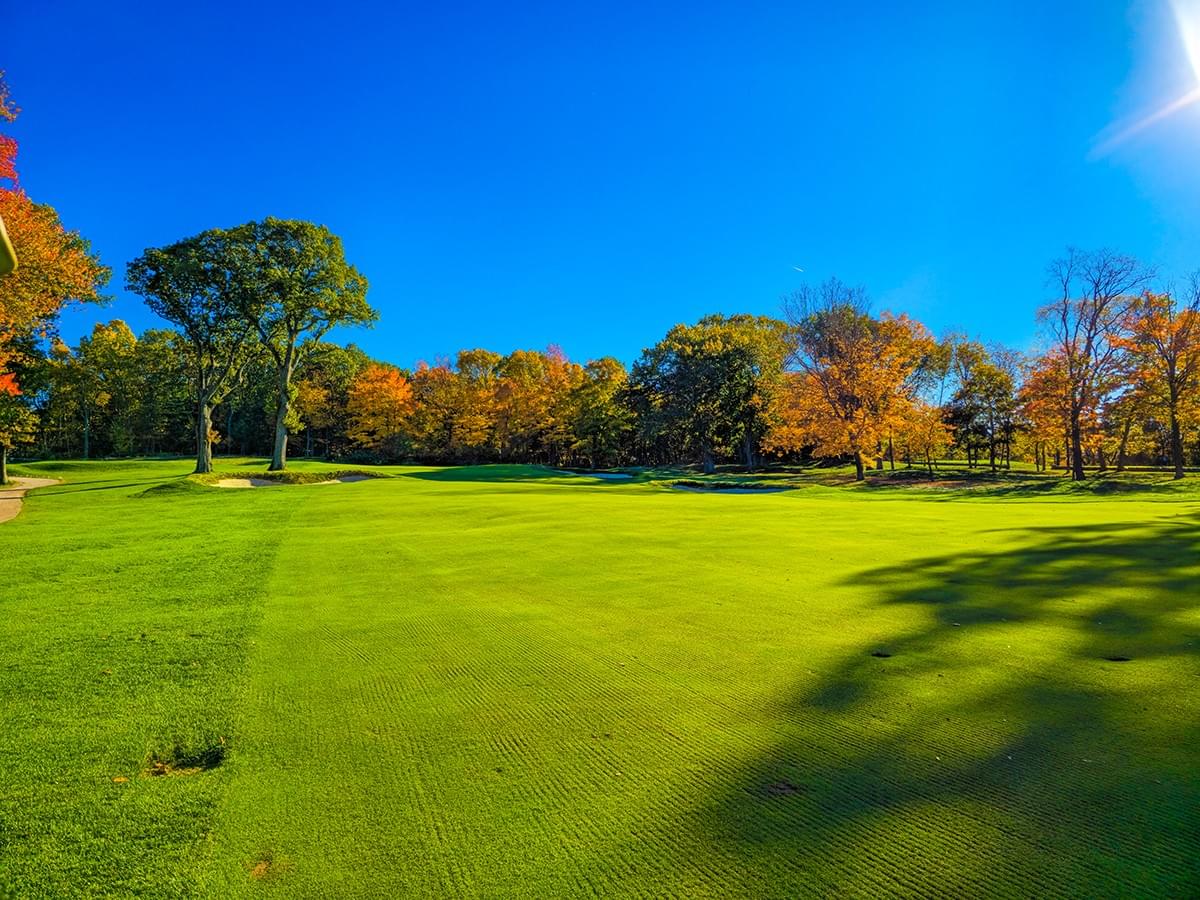
No doubt about it; fall golf at Salem Country Club is something special. Even in a year when all of the experts say the fall colors are muted, the course looked absolutely magnificent with its trees ablaze with oranges, yellows, and reds against a clear blue sky.
Now, I should point out that the course had undergone aeration about a week before I visited, and my host worried that I wasn't quite seeing Salem CC in all its glory, with glass-like greens that can be near-impossible to putt from above the hole. But I've never factored seasonal maintenance into my feelings about the quality of a course. If anything, the slightly slower green speeds probably helped my score, and I appreciate the investment really good clubs make in the continual upkeep to ensure the high quality of the course throughout the season. So, if you see small furrows in the fairways or some marking on the greens in my photos, recognize that those tell the tale of a love and care of the course that should be celebrated.
One of the Best Logos in Golf
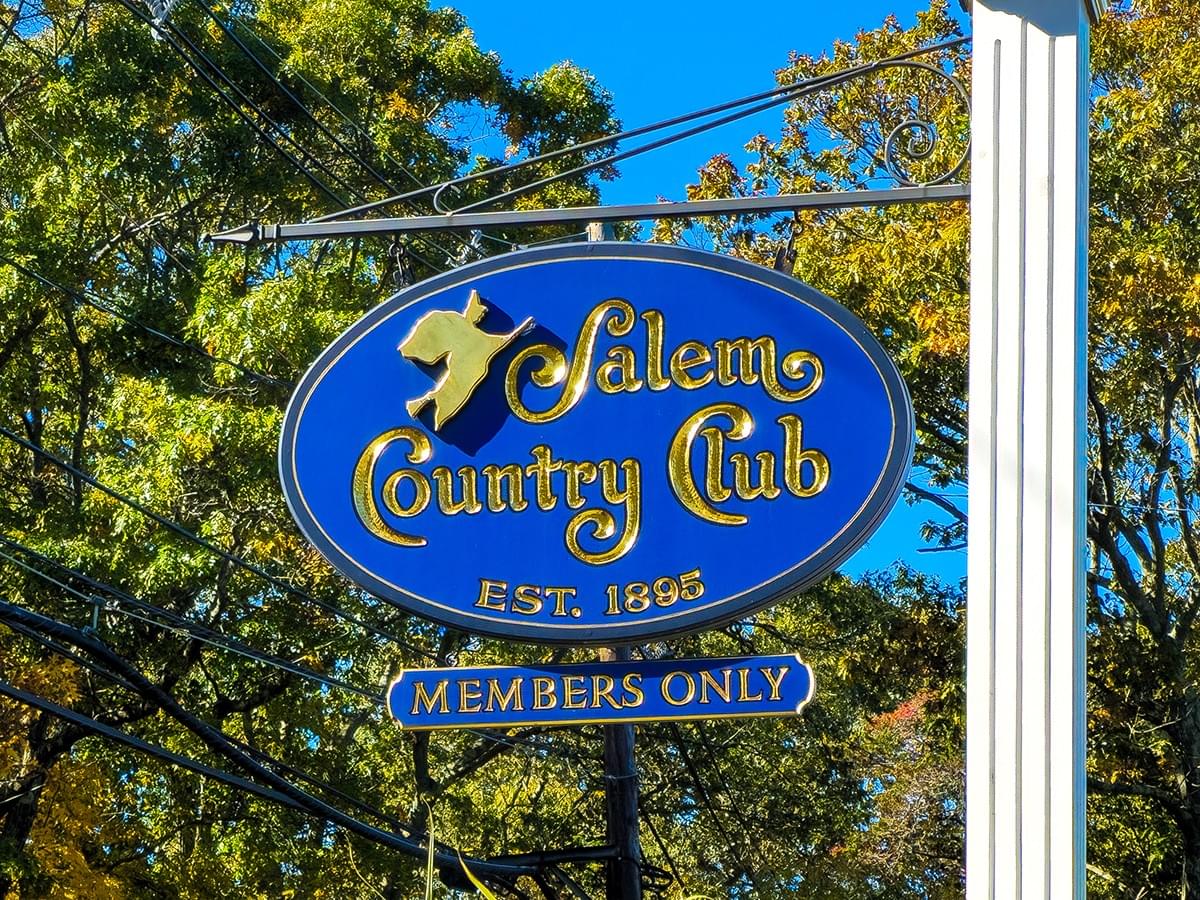
It's funny that I am writing about Salem CC so close to Halloween as there are natural parallels to the write-up I did about Sleepy Hollow Country Club just days before Halloween in 2022. Like Sleepy Hollow, Salem CC embraces its connection to the local history. And between them, I'd argue that Salem and Sleepy Hollow have two of the best -- and spookiest -- logos in all of golf! While Sleepy Hollow features the headless horseman, Salem has adopted the image of a witch flying on her broom for its logo, and to say I'm a huge fan would be a huge understatement.
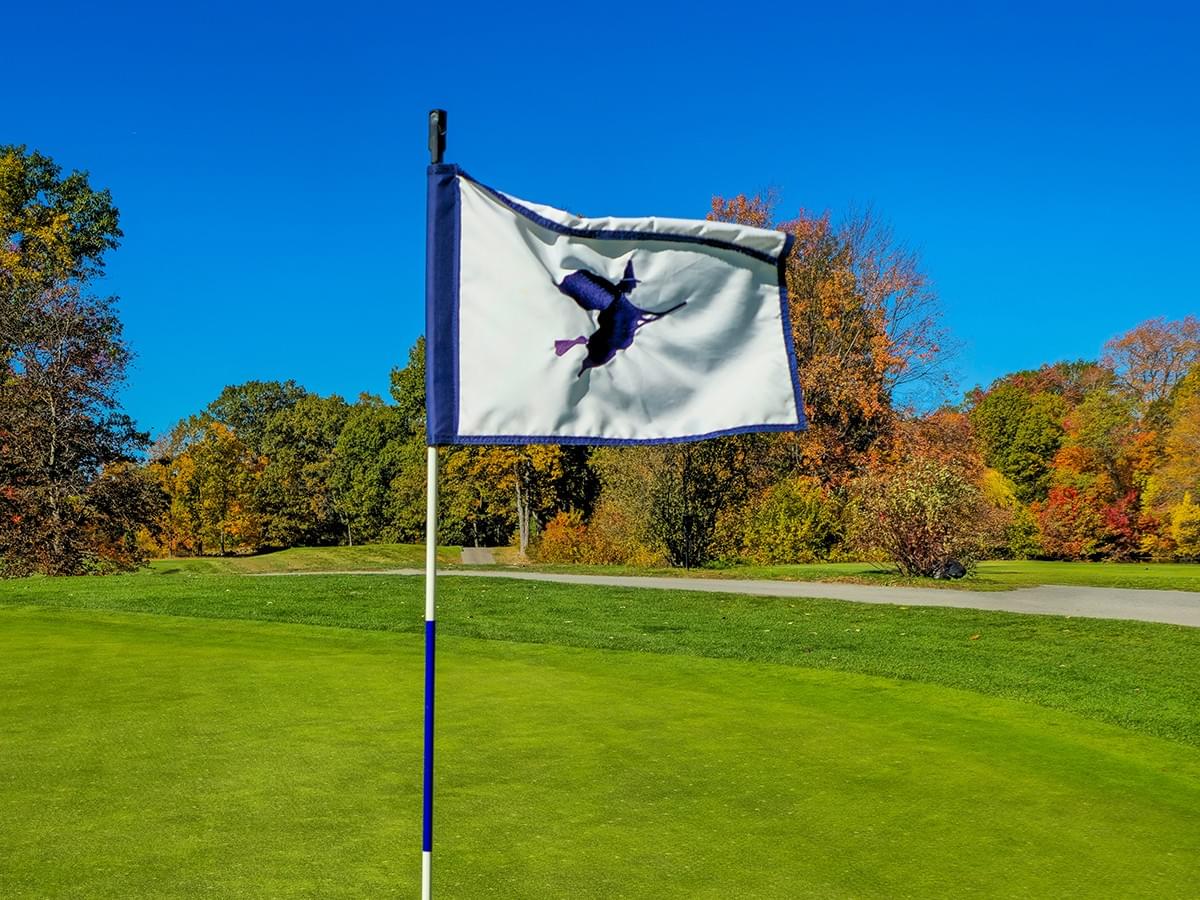
Salem CC's witch flies proudly on the flags of each green, and depending on how a player is scoring on a given day, he might be led to wonder if she has cast a spell -- either helping or hurting -- on his putter!
A History of Championships
While the club traces its history to 1895, Salem CC relocated a number of times in its first 30 years before finally settling at its current location in Peabody. The course as it now exists was designed by Donald Ross. And it didn't take long after its 1926 opening for Salem to earn the attention of golf's governing bodies. In 1932, the USGA brought the U.S. Women's Amateur to Salem CC. And over the years, the club has played host to another five USGA championships -- the 1954 and 1984 U.S. Women's Opens, the 1977 U.S. Senior Amateur, and the 2001 and 2017 U.S. Senior Open.
Course Overview
Like so many classic courses, Salem CC fell victim to encroachment from trees and ever-tightening mowing lines that over the decades changed the playability and aesthetics of the course and affected the challenge and strategy of play on the course as the original shapes and contours of Ross's greens were lost. In 2015, the club contracted golf course architect Eric Iverson to return the course to its original Ross design. Over the last 10 years, select tree removal and a redefinition of the greens with fidelity to Ross's original plans have virtually returned the course to its 1926 origins, with the exception of a couple of tee boxes that have been added to give the course additional length to keep up with advances in technology for the longest players in the modern game.
Today, the par-72 course tips out at just over 6,900 yards and offers tees ranging all the way down to just under 5,200 to accommodate players of all skill levels. We played from the blue tees, which measure 6,510 yards, and unless otherwise specified, all distances mentioned throughout the rest of this post are from the blue tees.
Hole No. 1 - Par 4 - 408 Yards
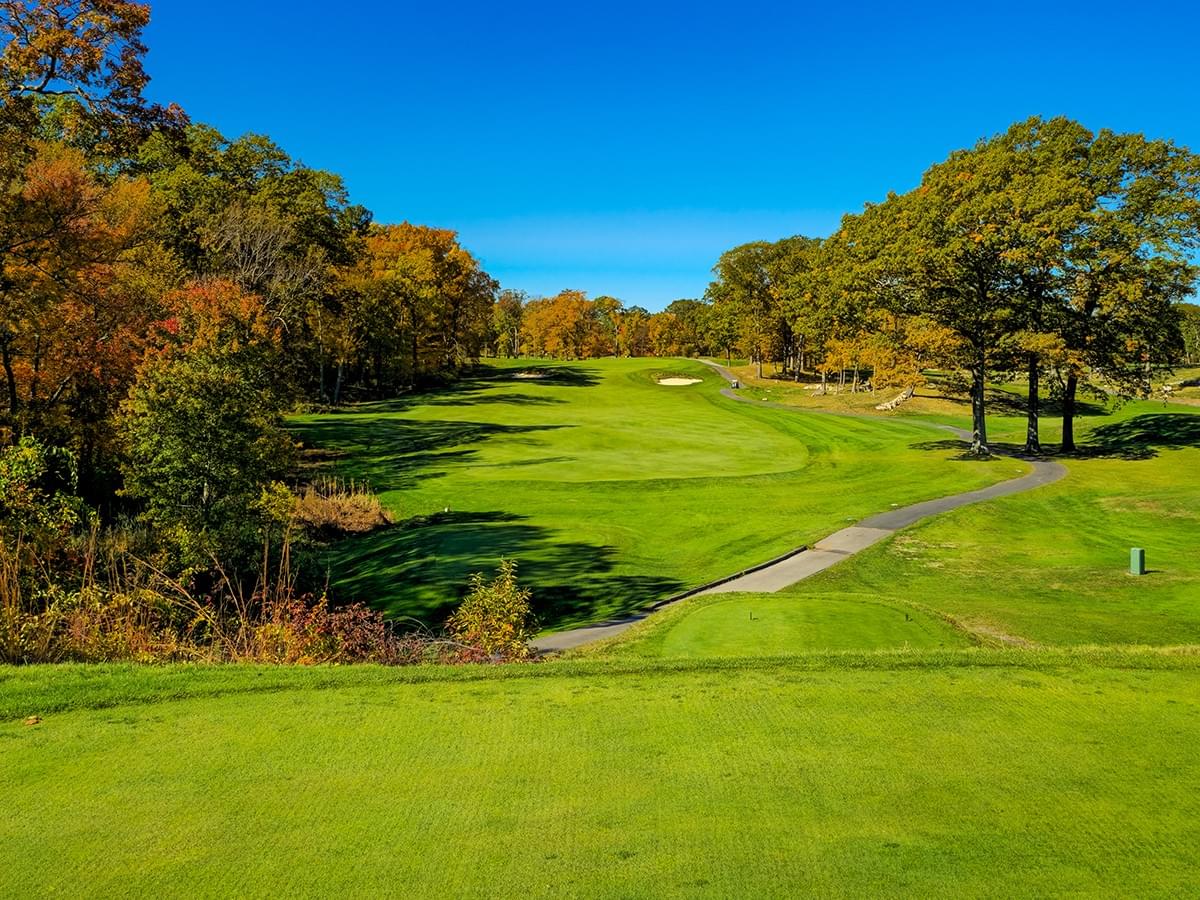
The opening hole is a long par-4 that plays downhill off the tee. A large mound on the left side of the fairway will stop the forward progress of any ball played to that side, leaving a long iron or hybrid to the green, while players who drive the ball right of the mound may be rewarded with enough roll to set up a mid-iron uphill to the green. There is ample room off the tee to miss the fairway to the right, but players who fail to find the short grass will have a difficult time reaching the green and keeping the ball below the hole.
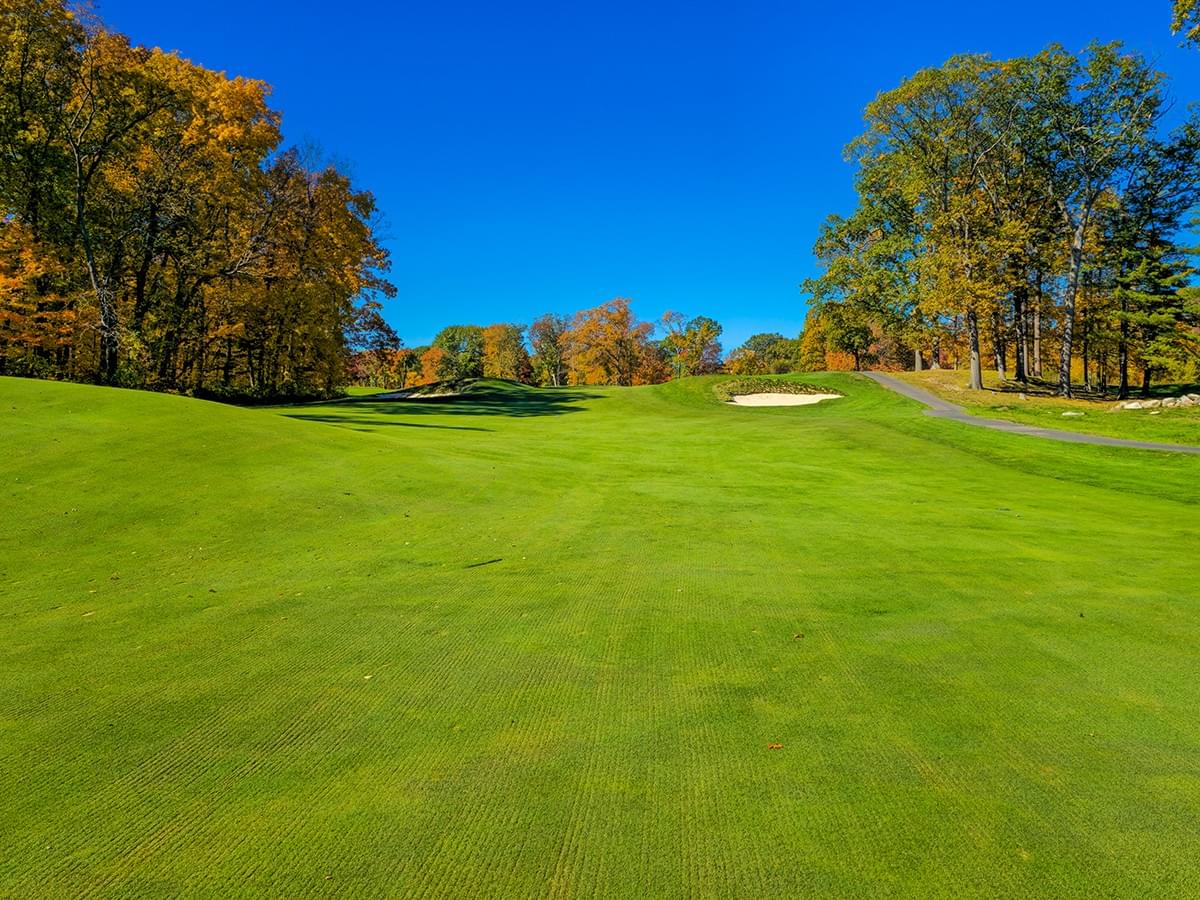
From the landing area, the fairway rises to an upper step that reaches back to the elevated green. Players won't be able to see much of the surface of the green, but short is better than long as balls that settle beyond the hole will be almost impossible to stop on the downhill putt and may even roll completely off the putting surface.
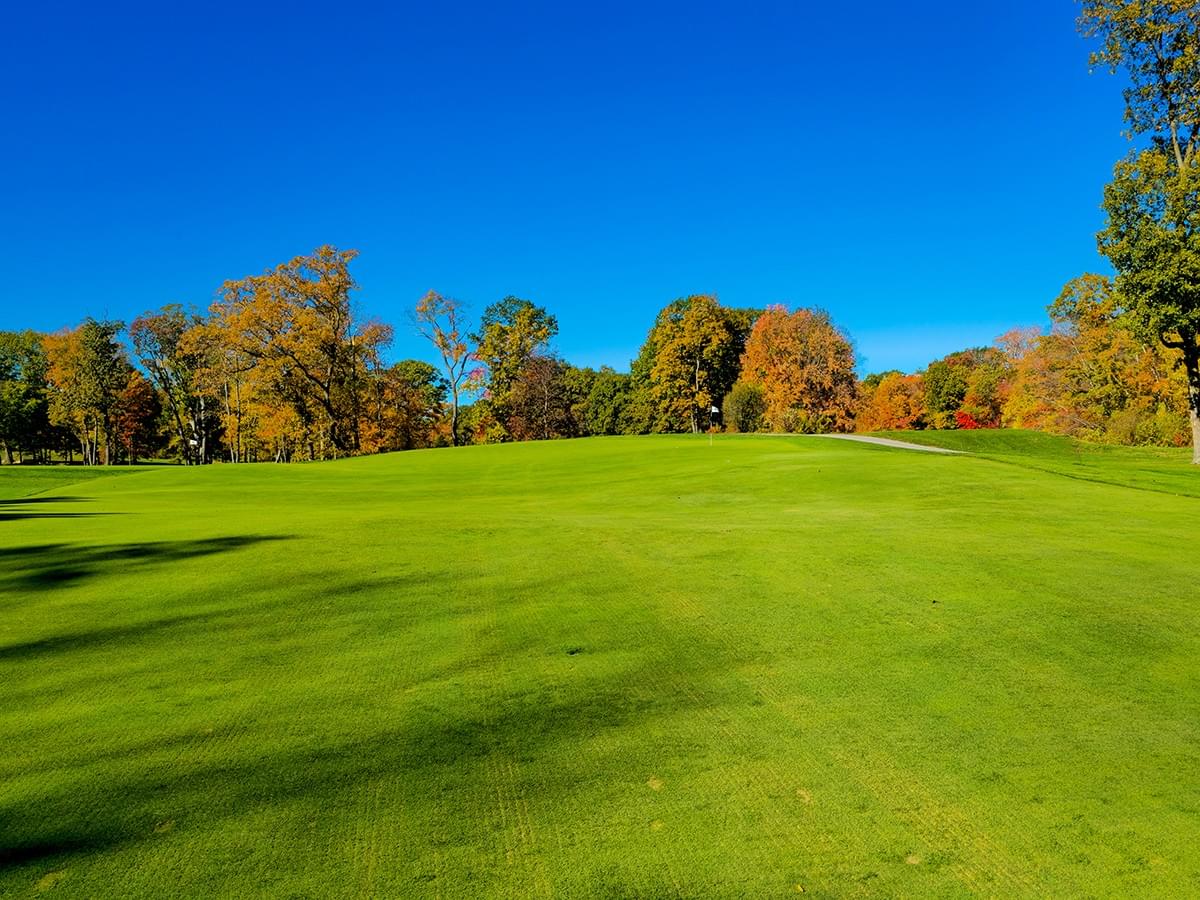
The first green features no greenside bunkers, but severe slope from back to front and turtle shell shaping that is a signature characteristic of so many Donald Ross designs ensures that there are plenty of defenses against low scores at this opening hole.
Hole No. 2 - Par 4 - 396 Yards
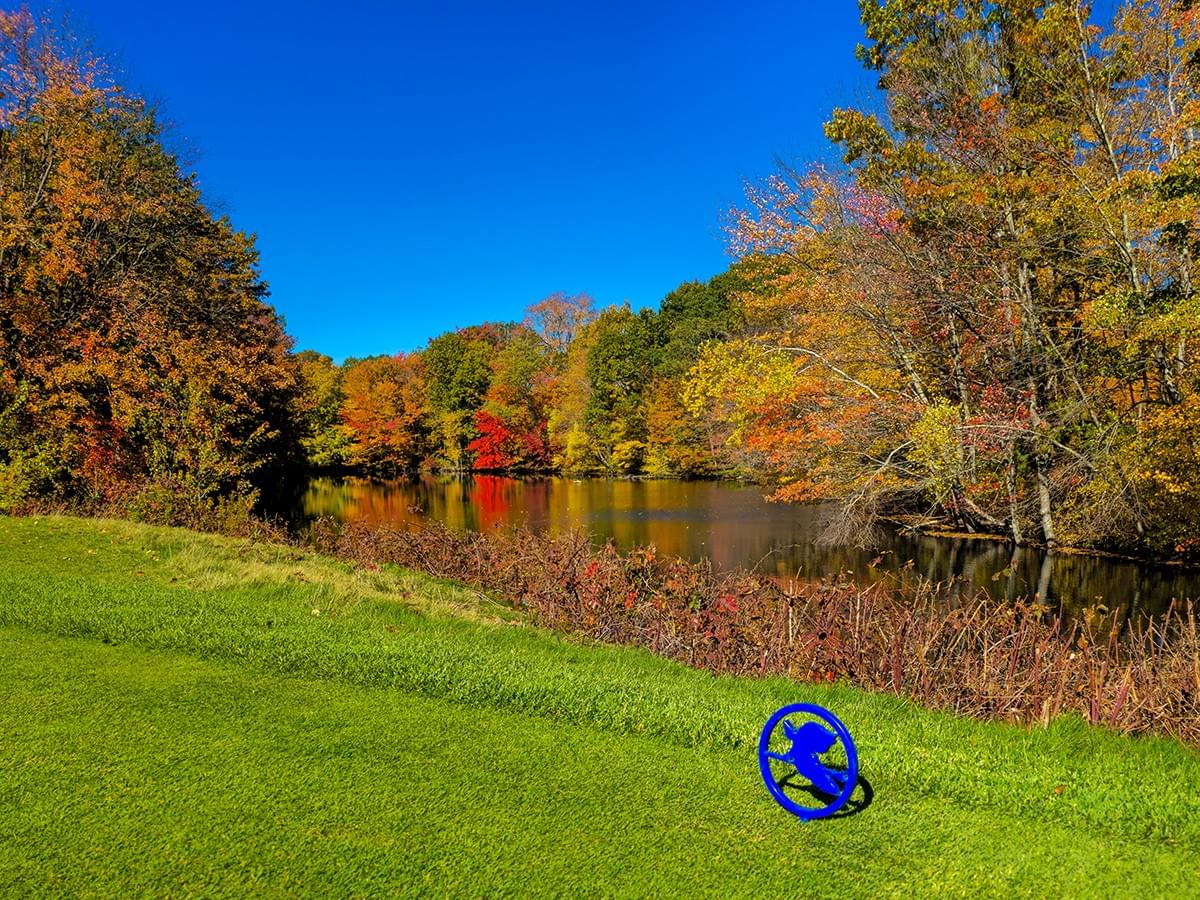
New reports claim the fall colors are muted this year, but they certainly looked spectacular against the clear blue sky on this particular day at Salem CC. Worth noting, while this pond sits to the right of the second tee, water really only comes into play on one hole throughout the entire course, on No. 9.
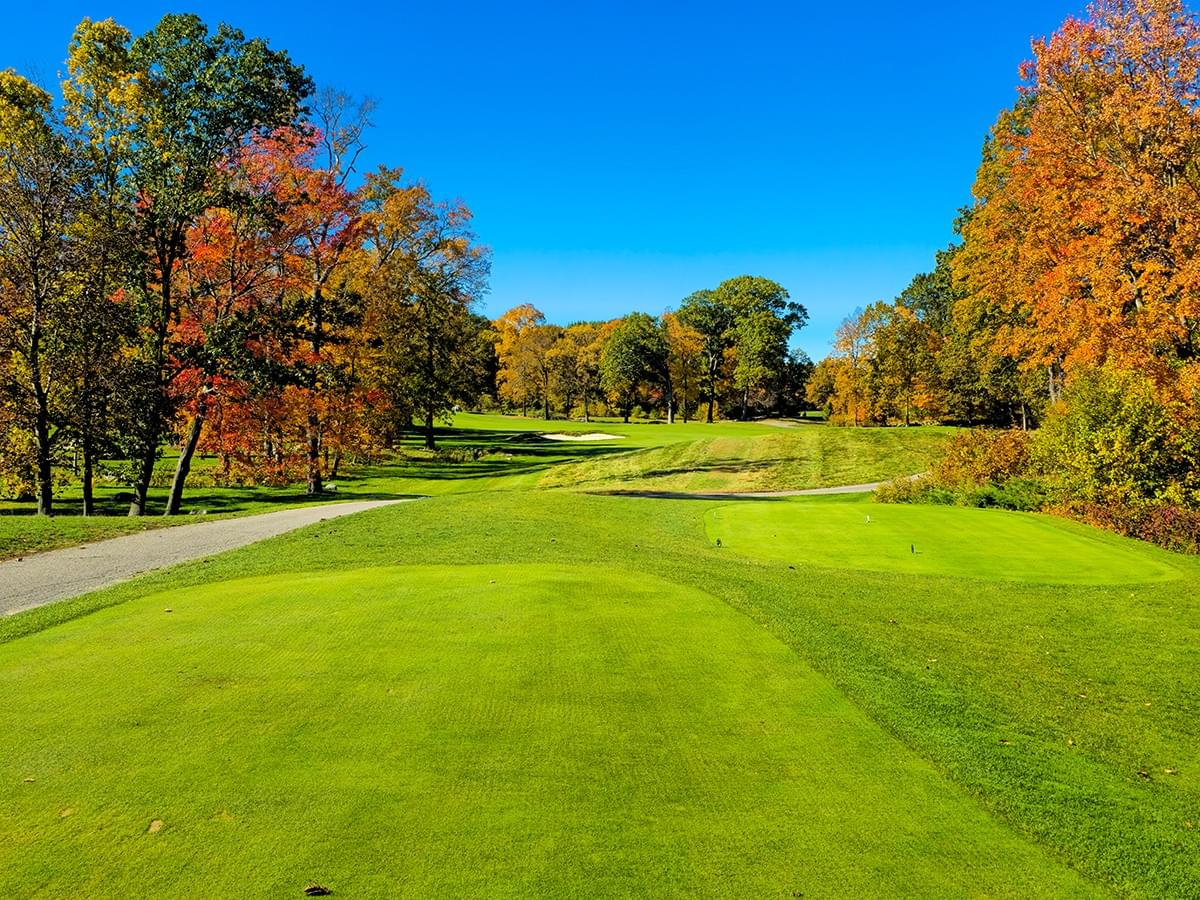
The second hole is a dogleg left that beckons big hitters to cut the corner and take on not only the bunker at the bend -- about 200 yards from the tee -- but also the trees that line the left side. A well-driven ball over the bunker should leave players an uphill mid-iron into the green.
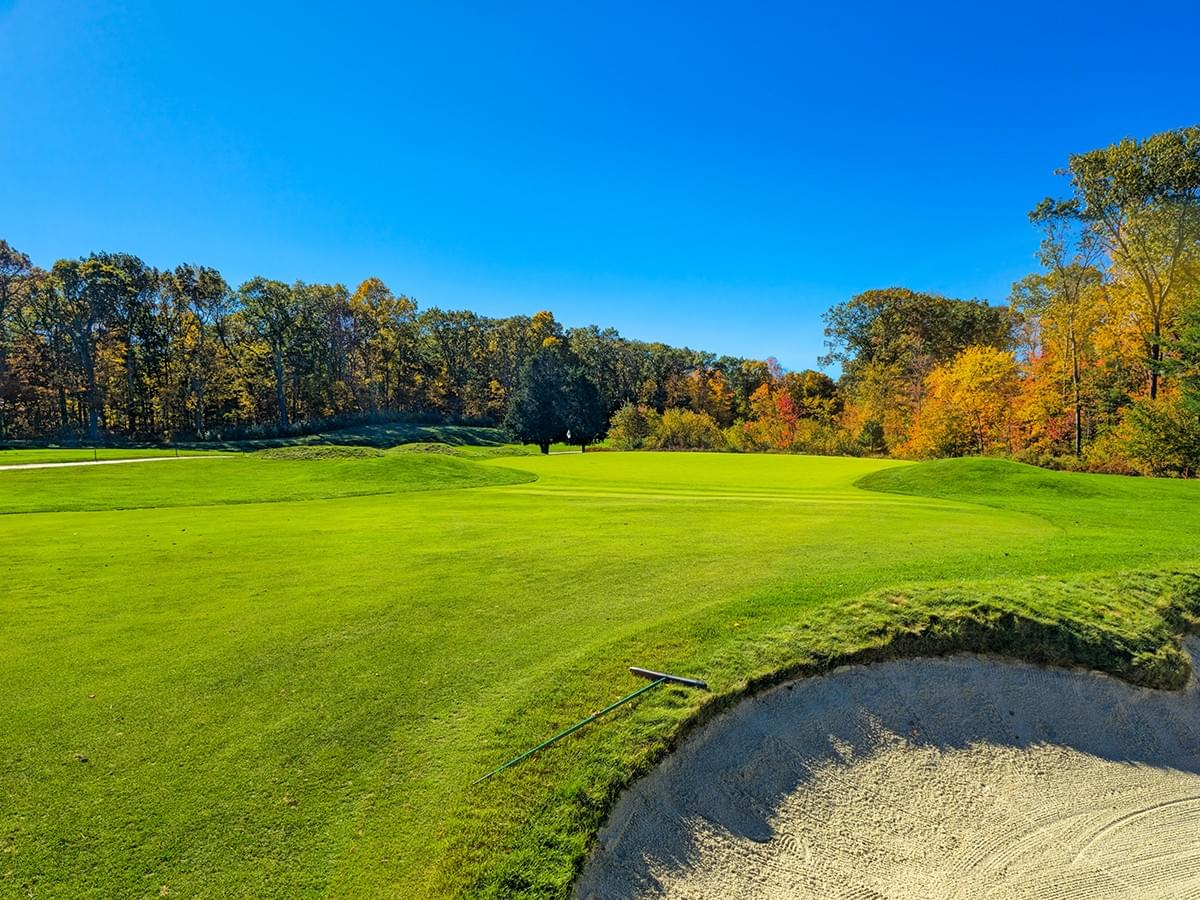
The only bunker that comes into play on the approach shot here sits about 50 yards short of the green on the right side. Once again, the slope and contours of this green provide the defense. Playing into the middle of this green, I was left with about a 25-foot birdie putt, which I was lucky to hole. The lesson I should have taken from this green is that it is best to play to the heart of the putting surface no matter where the pin is located. Unfortunately, that didn't sink in until I found myself battling the contours of the 17th hole a few hours later.
Hole No. 3 - Par 3 - 151 Yards
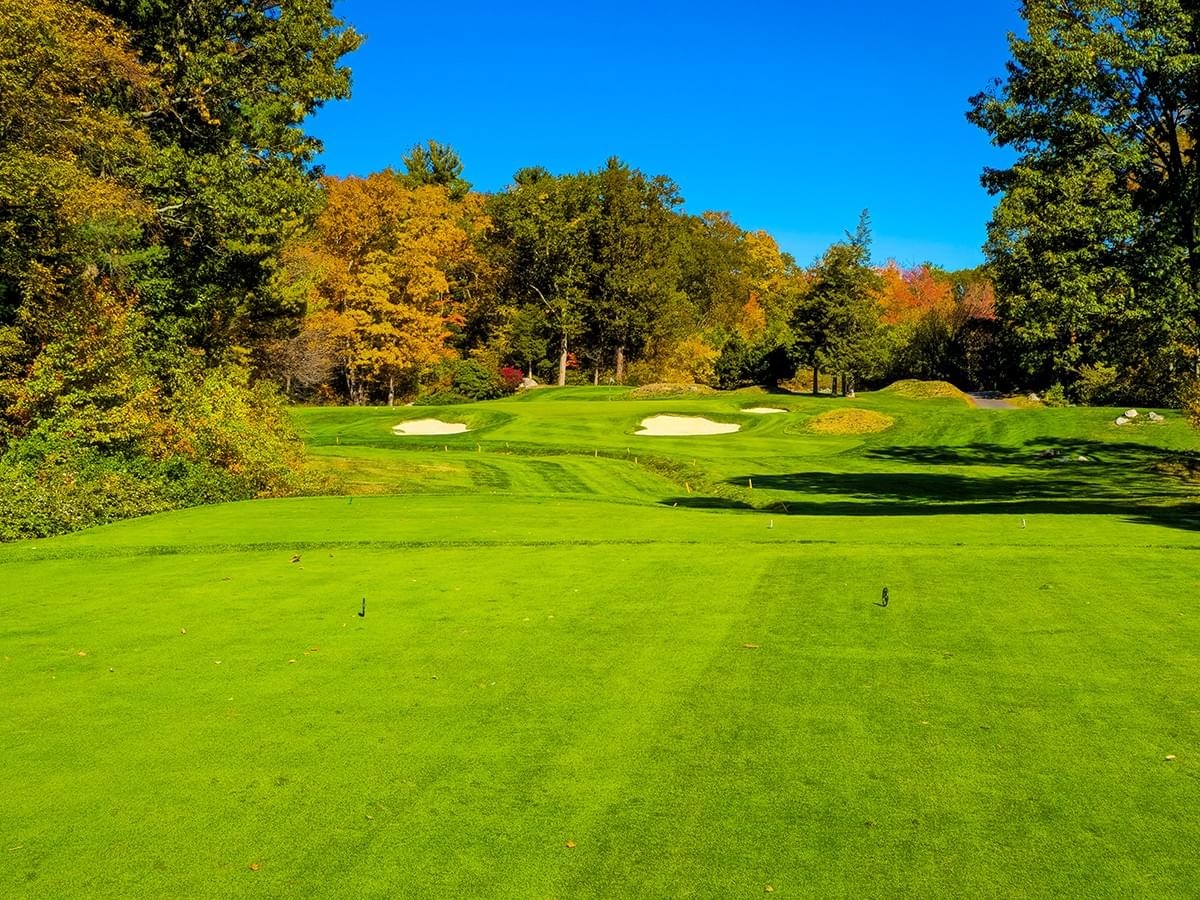
No. 3 is a mid-length par-3 that plays across a narrow stream to an elevated green that, once again, slopes severely from back to front. Three bunkers all protect the front half of the green in a pick-your-poison challenge. Players who take a little more club in order to avoid the sand may find the green but will likely have a near-impossible putt back down the hill, while those who play short of the pin to set up an uphill birdie attempt risk finding one of the three deep bunkers waiting to gobble up poorly-struck tee shots.
Hole No. 4 - Par 4 - 388 Yards
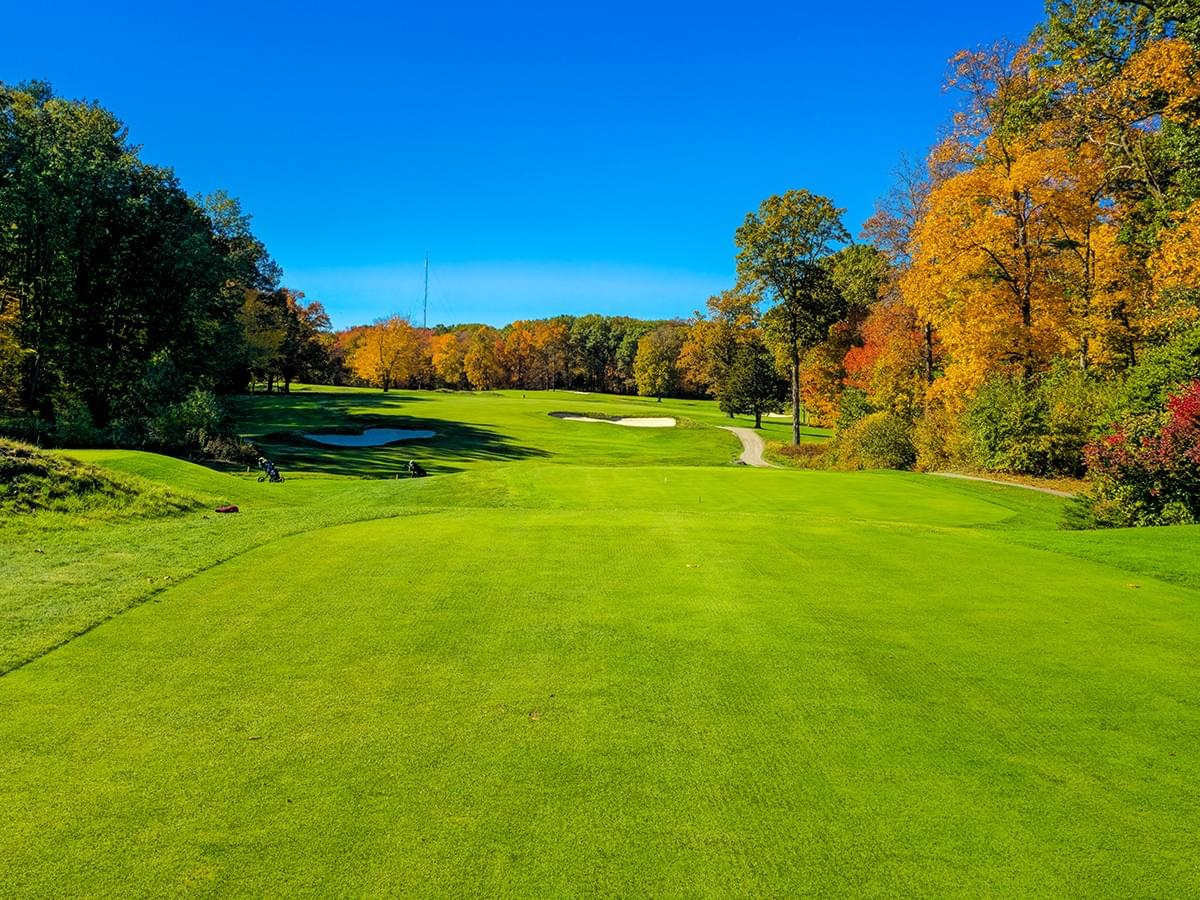
Providing a bit of counter-balance to the second hole's dogleg left, the fourth hole bends from left to right, and the fairway is sloped that way, too. The biggest hitters may want to try driving the ball down the right side and through the dogleg, setting up a short approach. For the rest of us, the play is to the left side of the fairway, allowing the slope to bring the ball back down to the right, beyond the far fairway bunker.
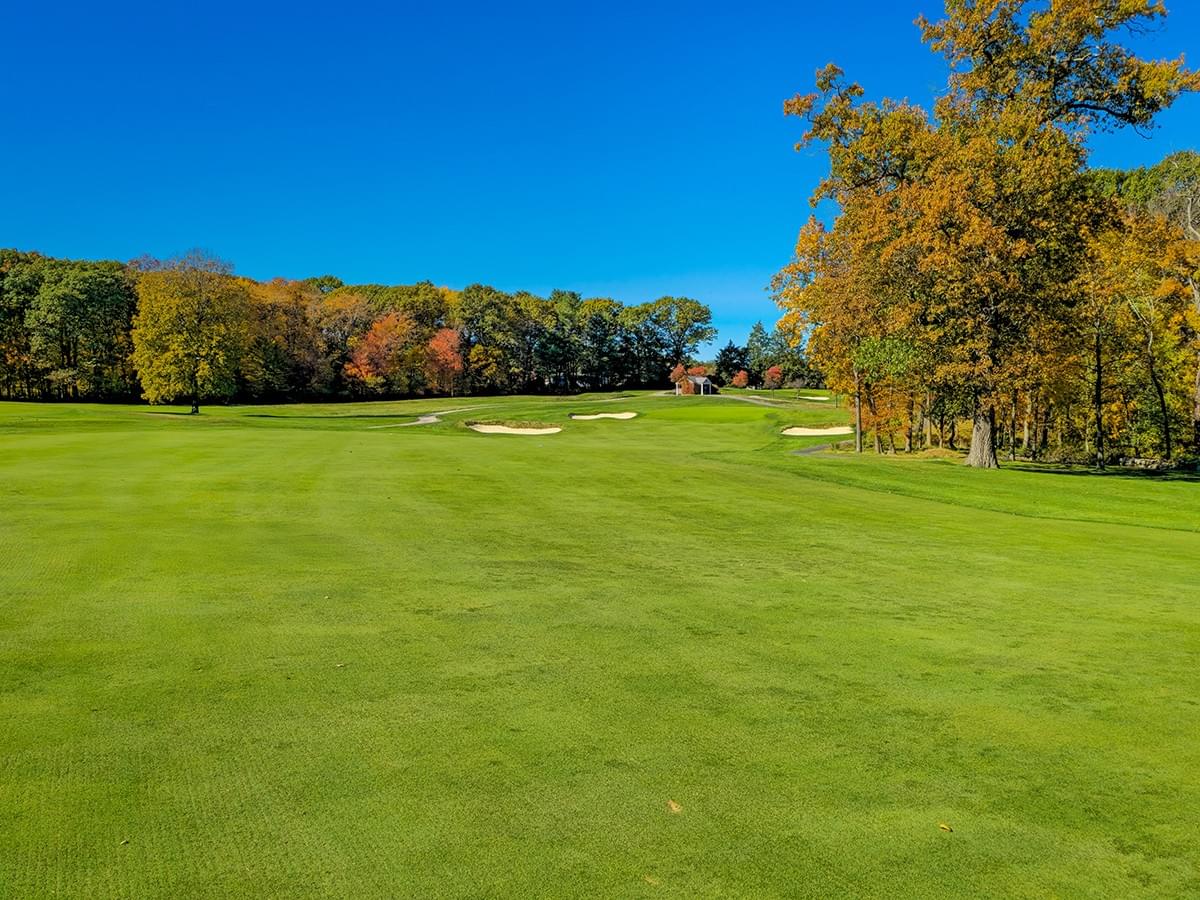
Two fairway bunkers about 40 yards short of the green frame the alley into the putting surface while a lone greenside bunker defends the front-left of the green. Creative players may opt to play a low, running shot into this green, letting the uphill slope of the last 50 yards or so slow down the ball in hopes of it settling below the hole.
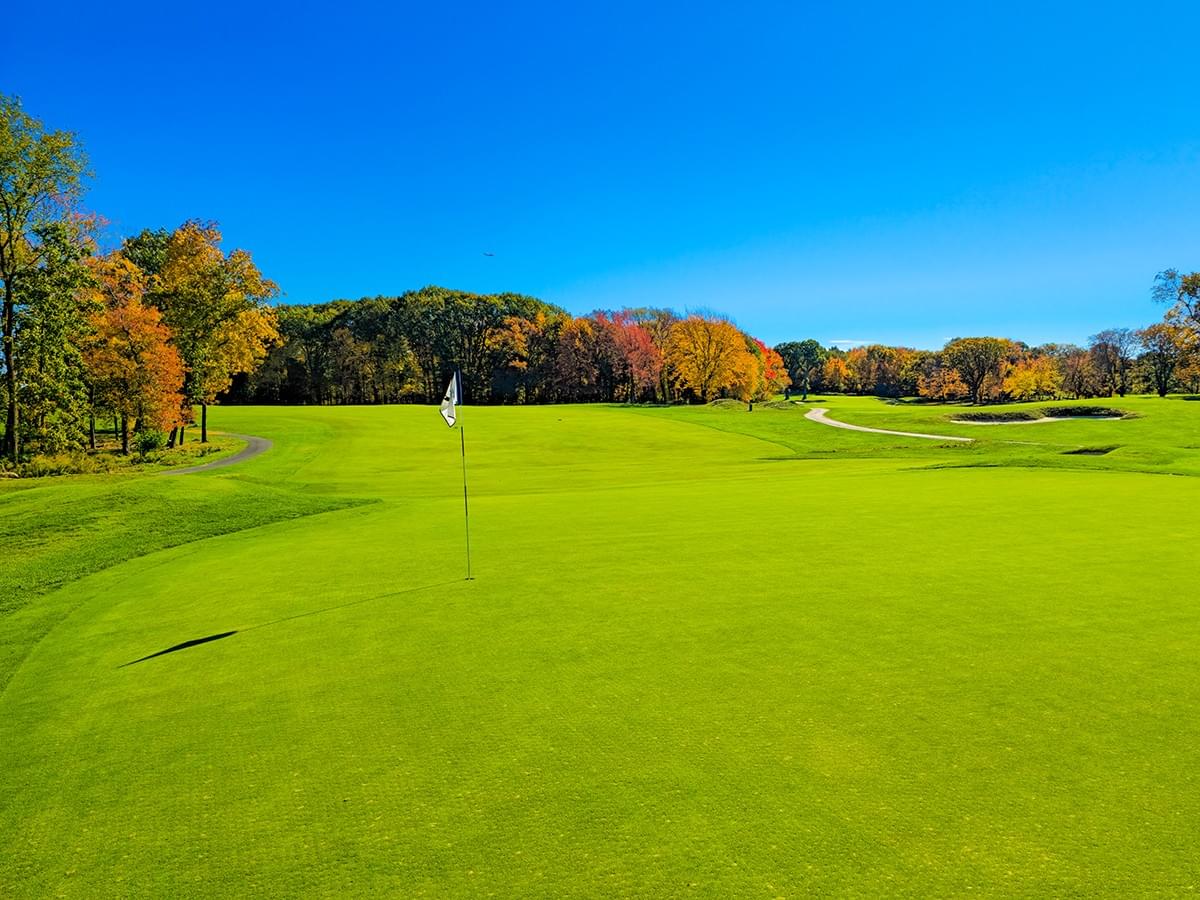
There is a lot more back to front slope here than this picture shows. What you can see in this photo, however, is that any ball played to the short side right of this pin (approaching from the fairway) will take the slope and fall off the green and into the sticky rough, making for a challenging chip back to this pin. These contours were really brought back into play when the club worked a decade or so ago to restore the original dimensions of the Ross-designed greens after 90 years of maintenance had seen the mowing lines close in around the putting surfaces throughout the course, shrinking the greens. The restoration resurrected the strategy Ross imagined in his design and reintroduced challenges and fun that had been lost to time.
Hole No. 5 - Par 5 - 490 Yards
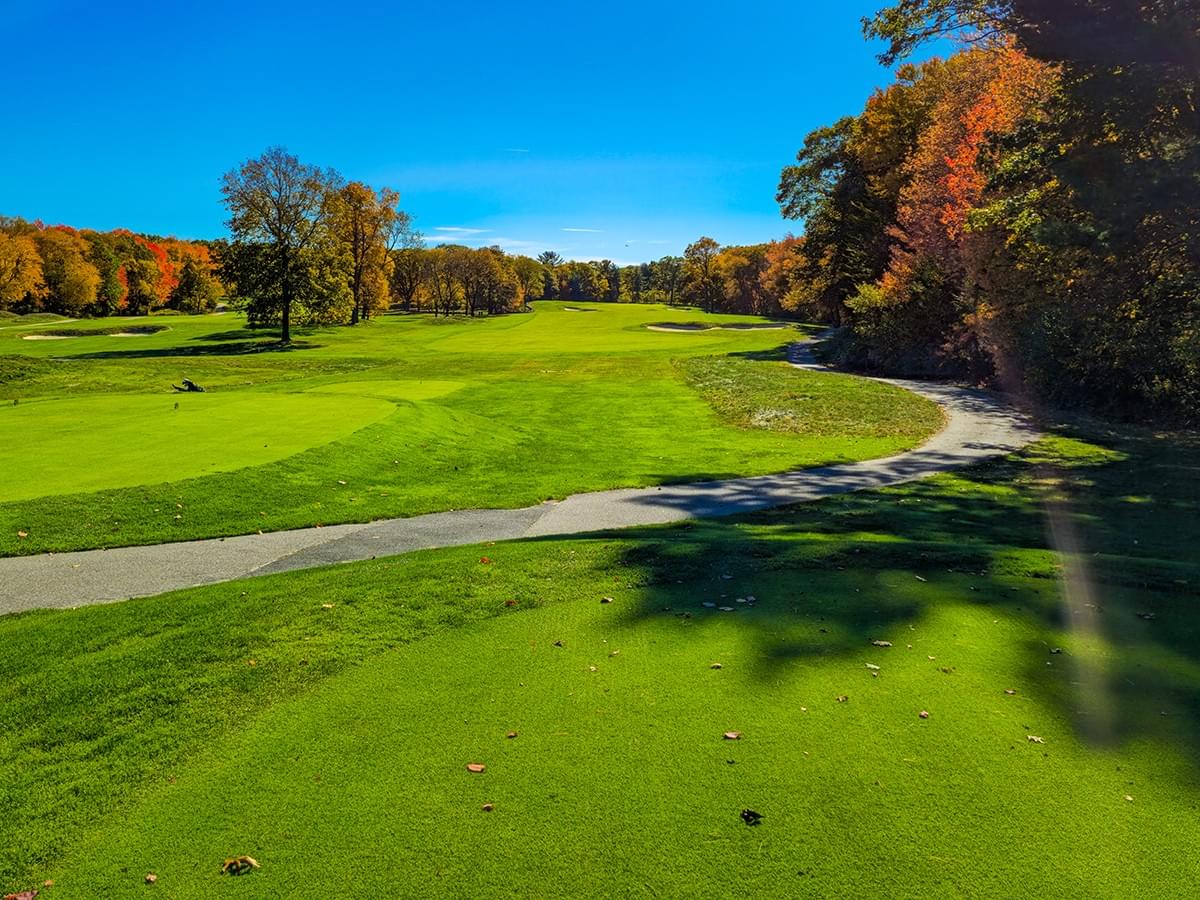
No. 5 is a straight, reachable par-5. No tricks; this hole simply demands good ball striking from tee to green. A well-played drive in the fairway should give most players the green light to go for this green in two. But don't think that makes birdie a foregone conclusion. And neither is par, as this green narrows from front to back and is protected by two large greenside bunkers to the right.
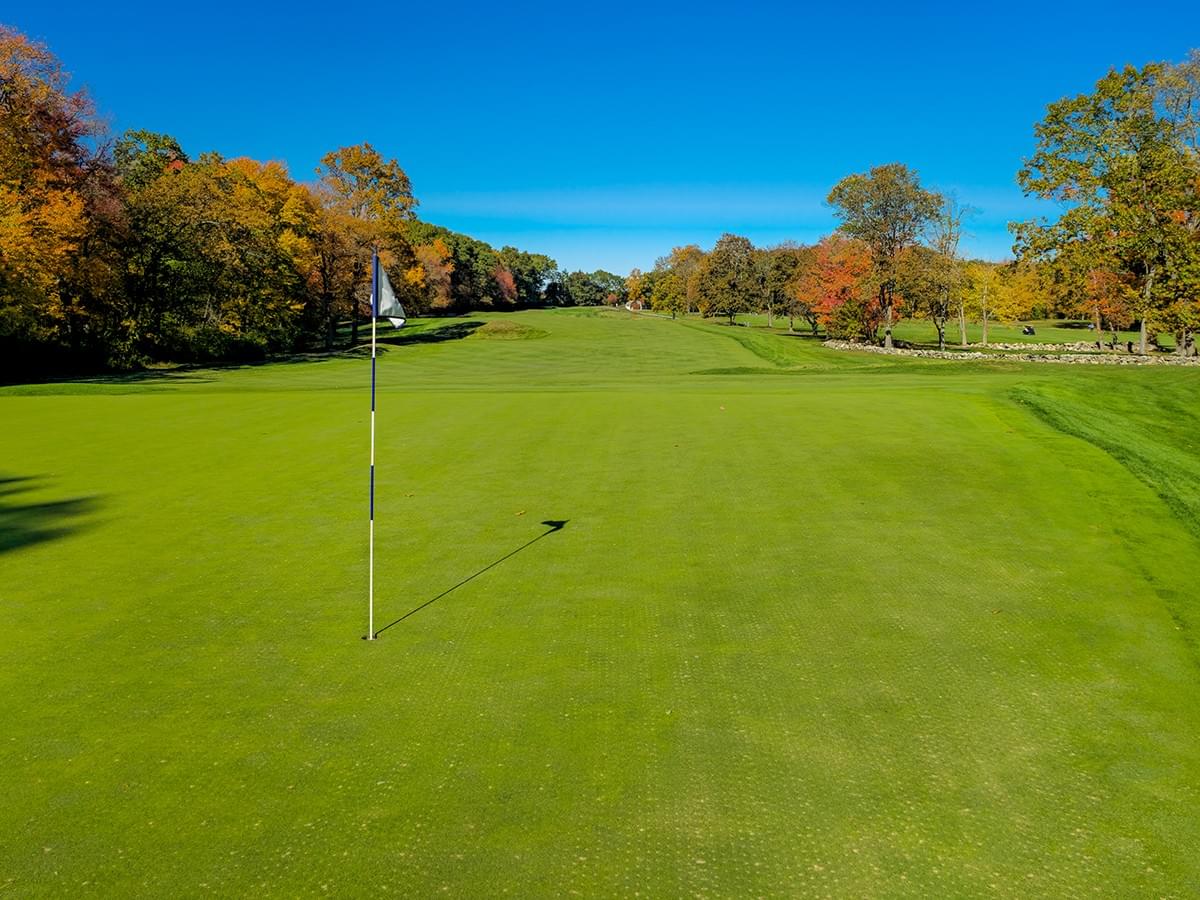
Players who choose to lay up on No. 5 have to contend with a large grass mound on the right side of the fairway. The rough was cut down on the mound the day I played, so late in the season, but in mid-summer, when it is thick and grows to mid-calf or higher, a lost ball isn't out of the realm of possibility for a ball that never strayed from the fairway. In other words, distance control, even laying up, is critical.
An interesting feature of the course that is reflected in this shot taken from behind the hole back toward the tee is that while the bunkers all seem relatively large as you approach the green, you actually can't see most of the bunkers on the course once you get past them and turn around to look back toward the tee. It's a really interesting effect created by Ross's clever use of elevation and land movement to give players sight lines and aiming points from tee to green while creating an entirely different aesthetic looking back from green to tee.
Hole No. 6 - Par 3 - 212 Yards
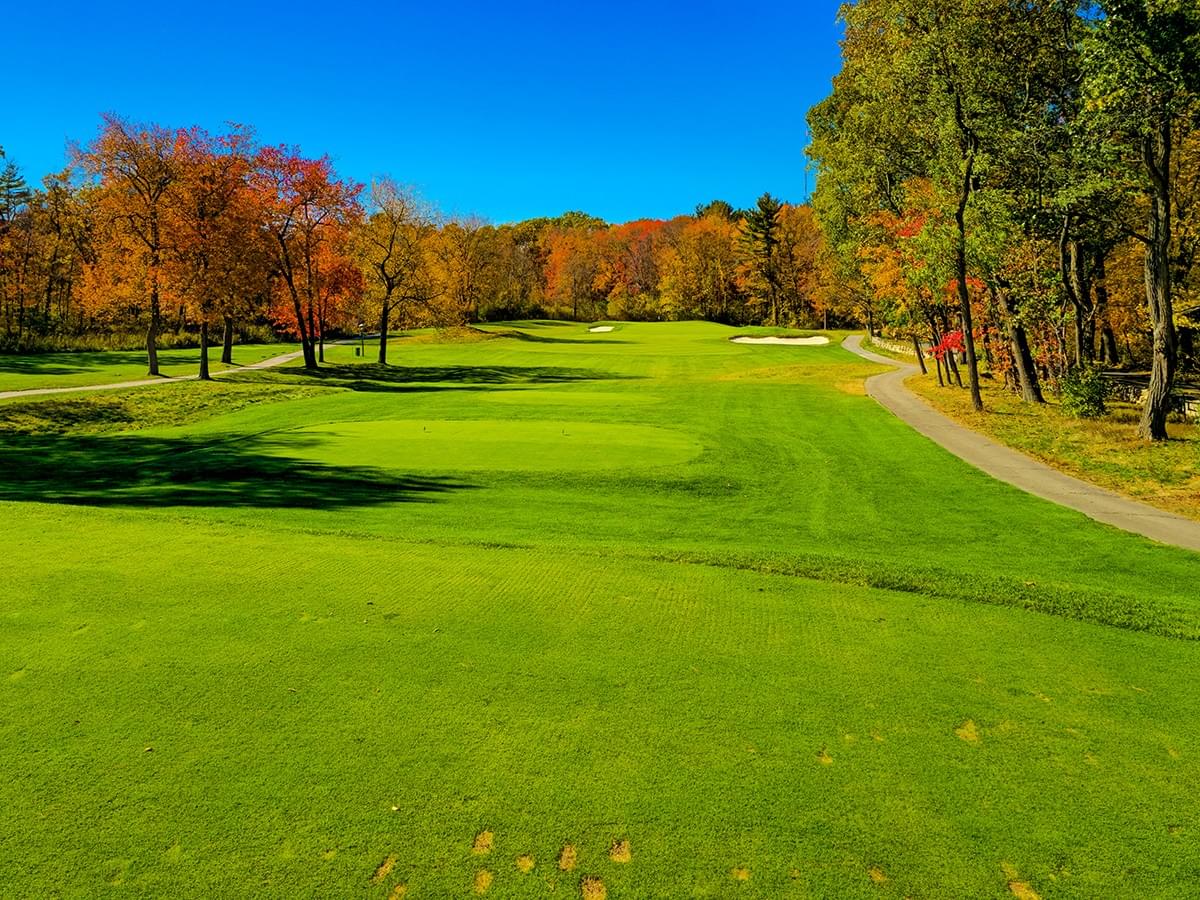
No. 6 is the longest par-3 on the course, with a deep greenside bunker left and a second bunker about 40 yards short-right. The ideal play off the tee is a long iron or hybrid to the center of the green, but for players who don't have the length or the confidence to hit that shot, there is plenty of fairway short of the green to lay up with a mid-iron shot of 170 yards or so, setting up a 50-or-so-yards pitch shot to the hole, keeping open the possibility of a par and hopefully limiting high scores to no more than a bogey.
Hole No. 7 - Par 4 - 389 Yards
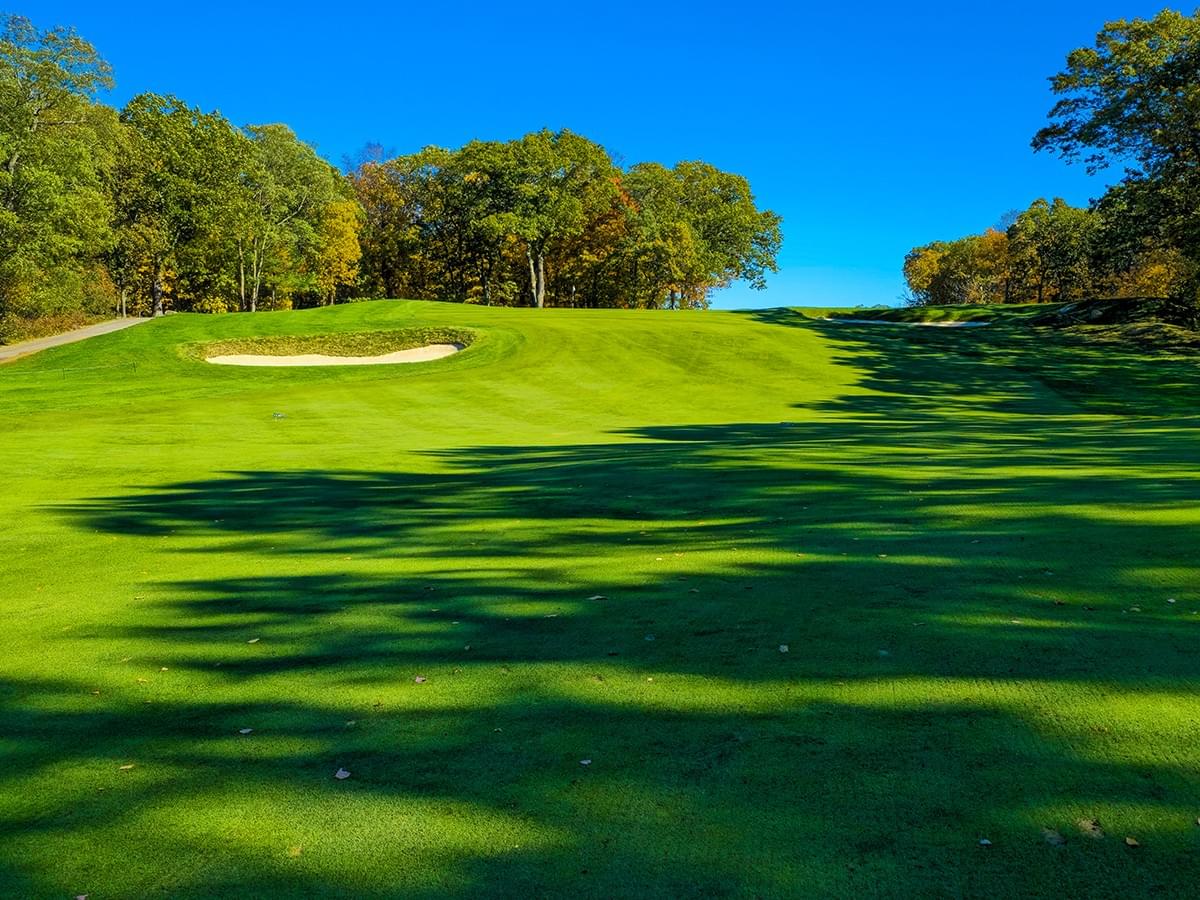
The seventh hole is an uphill par-4 with no real trouble to speak of off the tee so long as players keep the ball in the fairway. The real challenge is the uphill approach that will require at least one extra club, playing to a green that players cannot see from the fairway. It's important to reach and hold the green with the second shot, as balls that fail to carry the false front will roll as much as 50 or 60 yards back down the hill and possibly even into the deep bunker roughly 50 yards short of the green on the left, which could be disastrous for the scorecard.
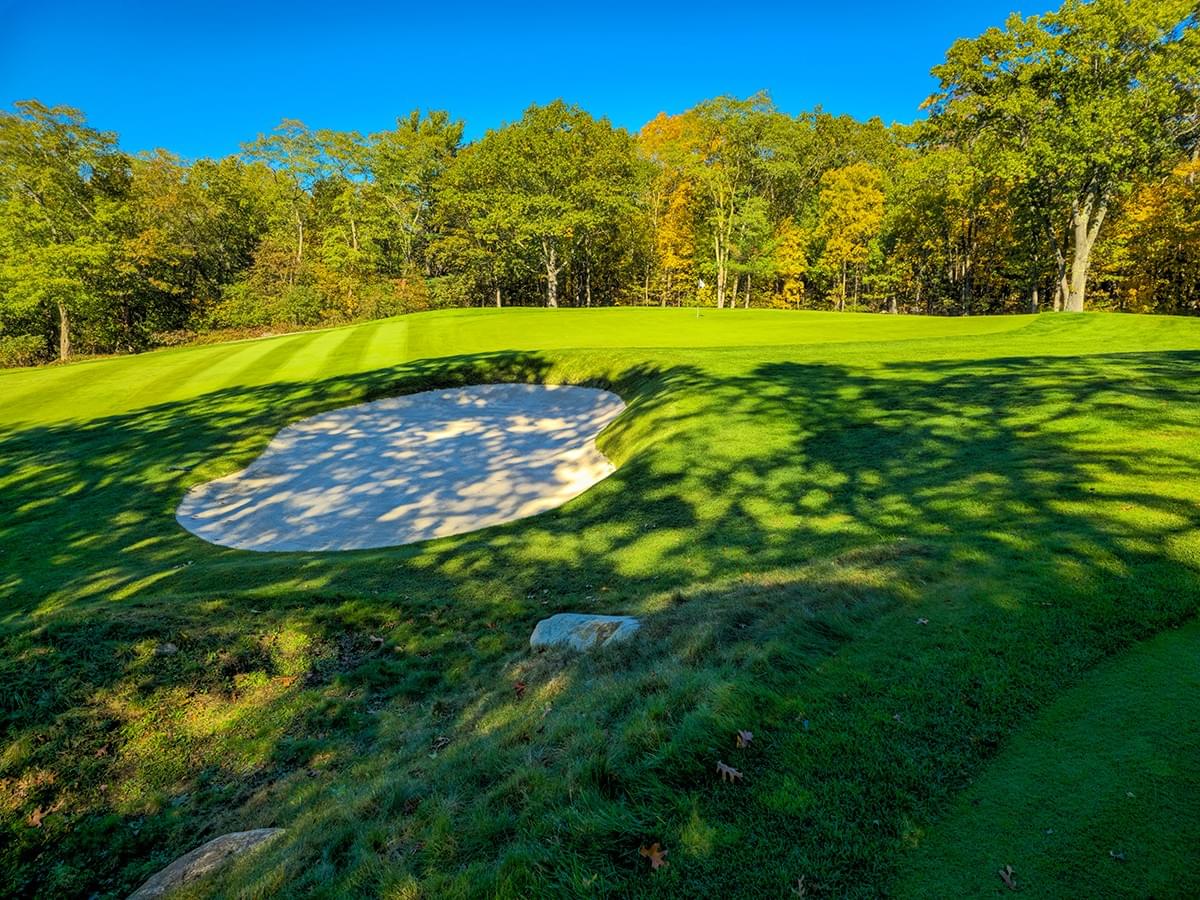
The large bunker short-right of the green is not a terrible place to bail out on the approach to No. 7. This image captures some of the slope and contours of the green that make it such a difficult hole -- the No. 5 handicap hole on the entire course.
Hole No. 8 - Par 5 - 499 Yards
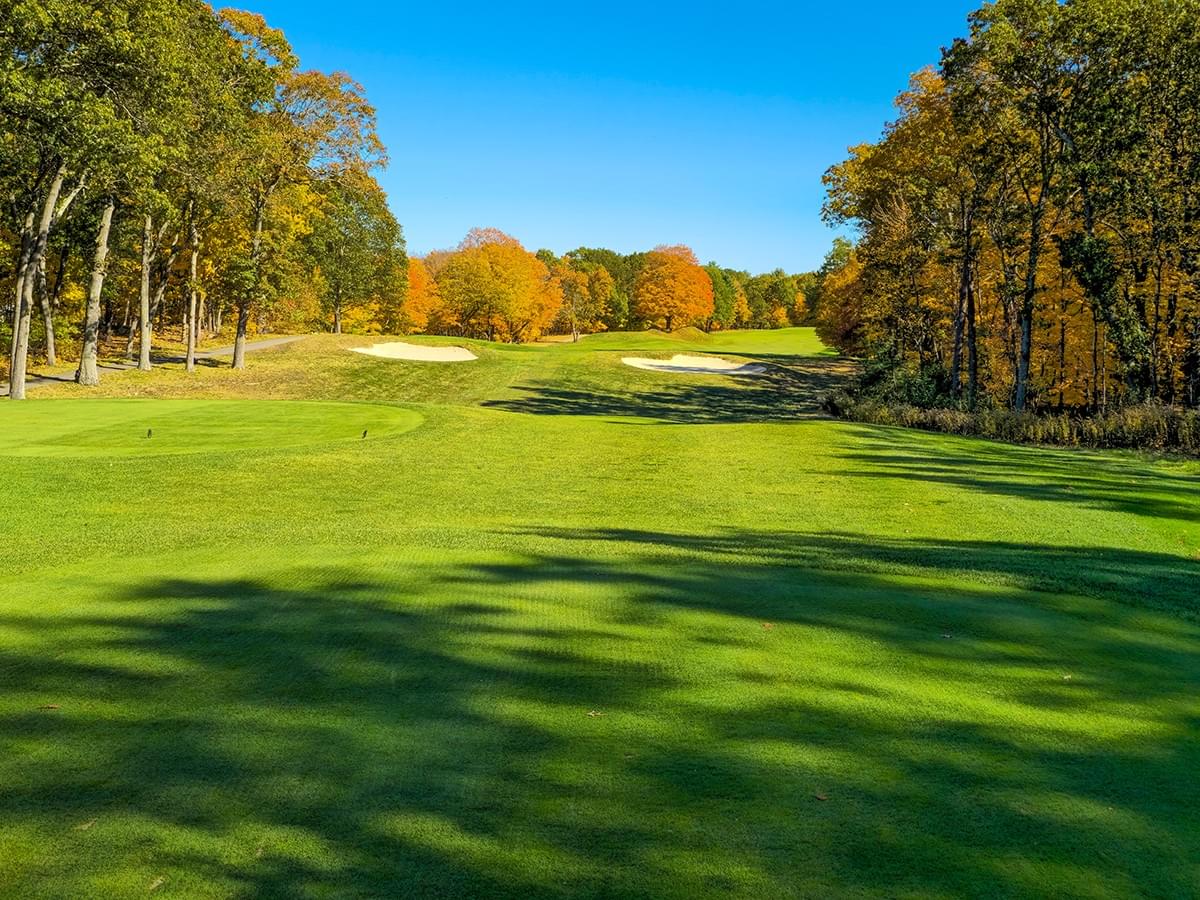
Longer hitters will once again have an opportunity to challenge a par-5 green in two shots here at the eighth hole -- a 500ish-yard hole that moves gently from left-to-right. The ideal drive is over the left side of the bunker on the right side of the fairway. The two bunkers visible from the tee are another interesting feature of this Ross design, which we'll see again on No. 16. Barely 140 yards from the tee, these bunkers really are not in play at all on this hole unless a ball is totally mishit from the tee. They do, however, provide a visual frame and aiming line for the player, who otherwise might not have a sense of where to try to hit the ball on this hole.
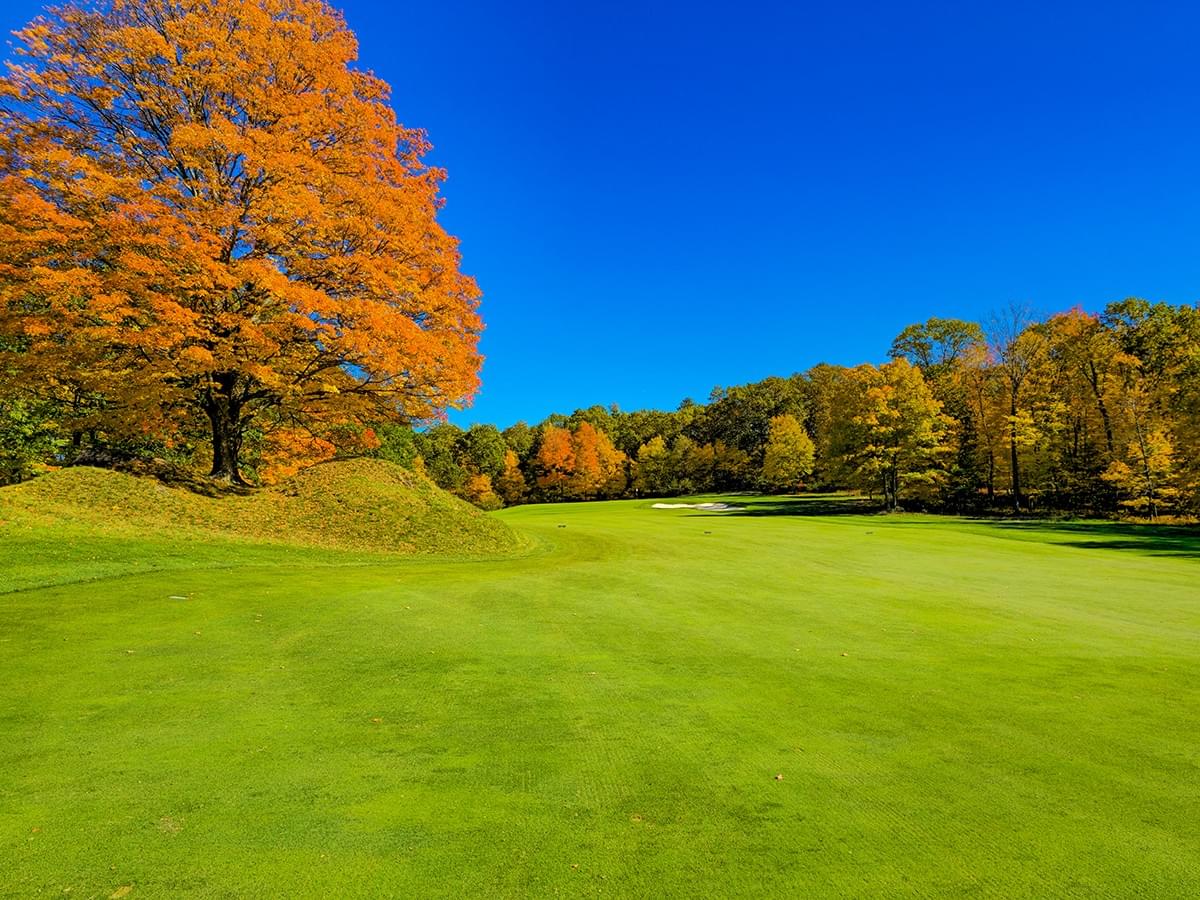
I just loved the tree among the mounds to the left of this fairway. Impossible for me to tell how natural those mounds are, but it was not unusual in the Golden Age of golf course architecture for designers like Ross, MacKenzie, MacDonald, Tillinghast, and others to cover boulders with sod rather than blowing them up with dynamite or attempting to excavate them. And while I understand some ten tons of dynamite were used to clear trees from the land to shape this course, I'd like to think there are some monster boulders under those mounds there to the left of No. 8.
As for how to play this shot, there is ample room to play a low runner into the green so long as the shot remains left of the greenside bunker on the right. There also is a bailout area left of the green to collect errant shots, which could be particularly useful for those big hitters who may go for this green in two but miss to the left. Any player who finds the middle of this green in three shots will have a very realistic chance at birdie, no matter where the pin is cut.
Hole No. 9 - Par 4 - 390 Yards
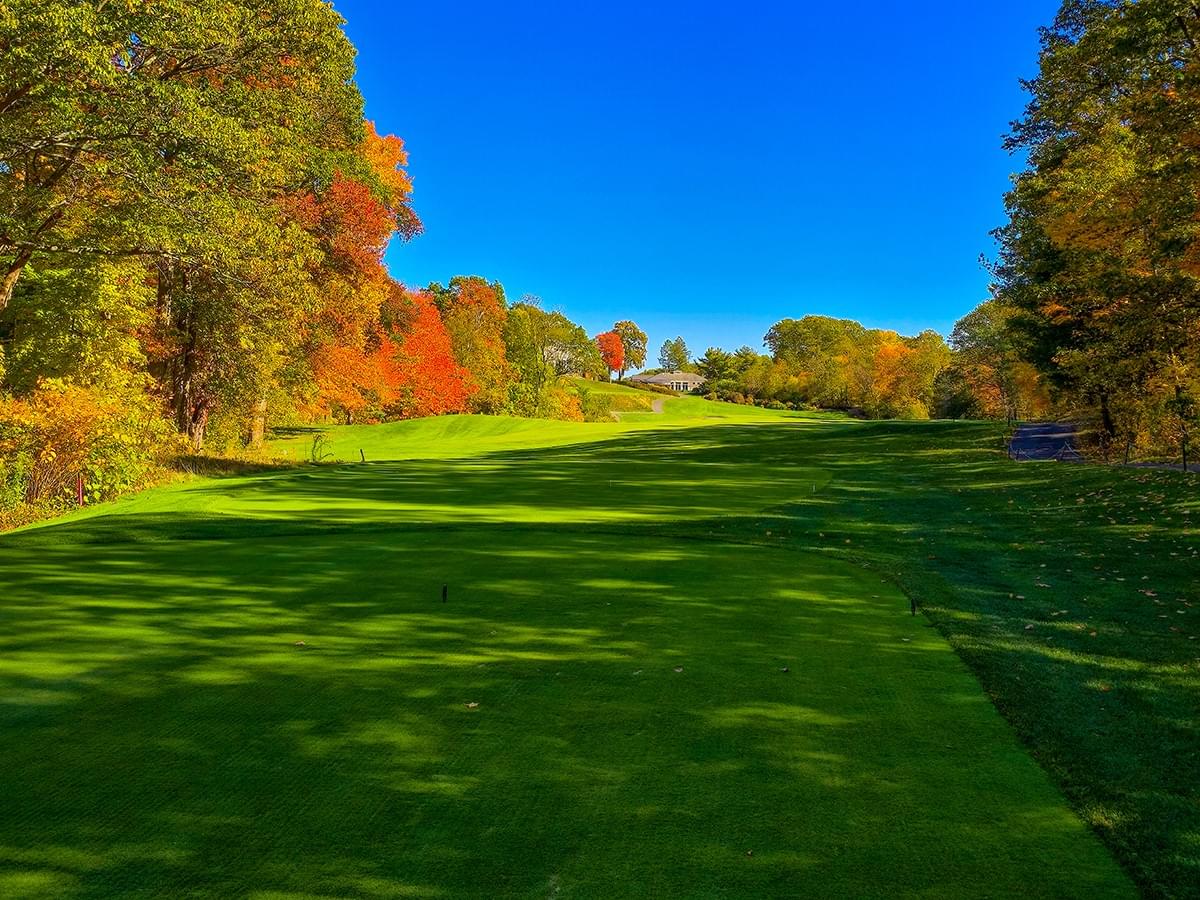
I absolutely loved the ninth hole at Salem. It's the only hole on the course on which water comes into play, and after a wonderful drive, I was fortunate I didn't find the water from the tee! The fairway on No. 9 moves from left to right from tee to green. There is much more room in the fairway to the right than it appears. Balls seemingly hit up the middle are likely to catch the downslope, propelling them forward but also the right-to-left slope that will deposit those tee shots in the thick rough left of the fairway.
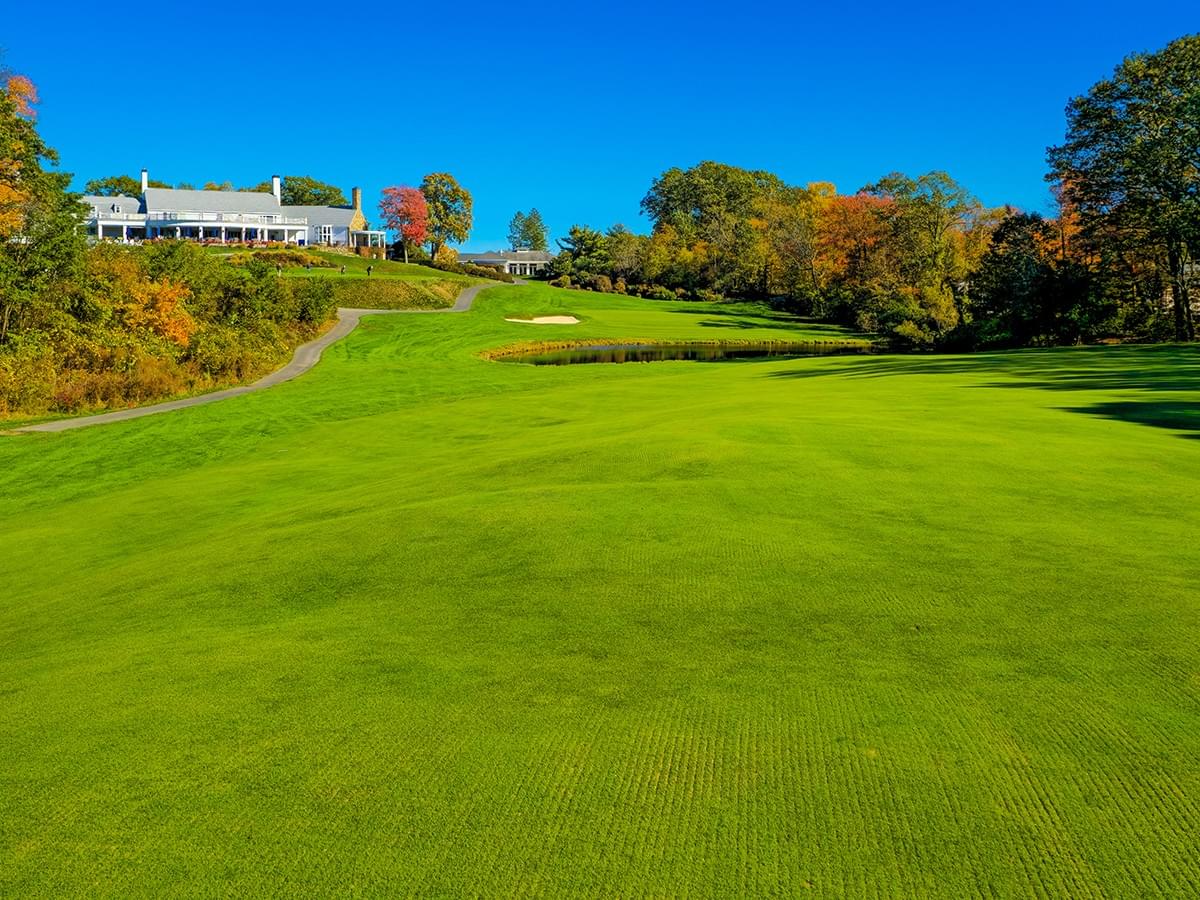
There is a bit of a speed slot for bold players who play the ball up the middle of the fairway with maybe a little bit of a fade. I was fortunate to play just such a shot (a mishit, really; I was aiming at the right side of the fairway) and found myself just short of running into the pond that fronts the green. For most players, however, the approach will be a short- to mid-iron over the water to an elevated green.
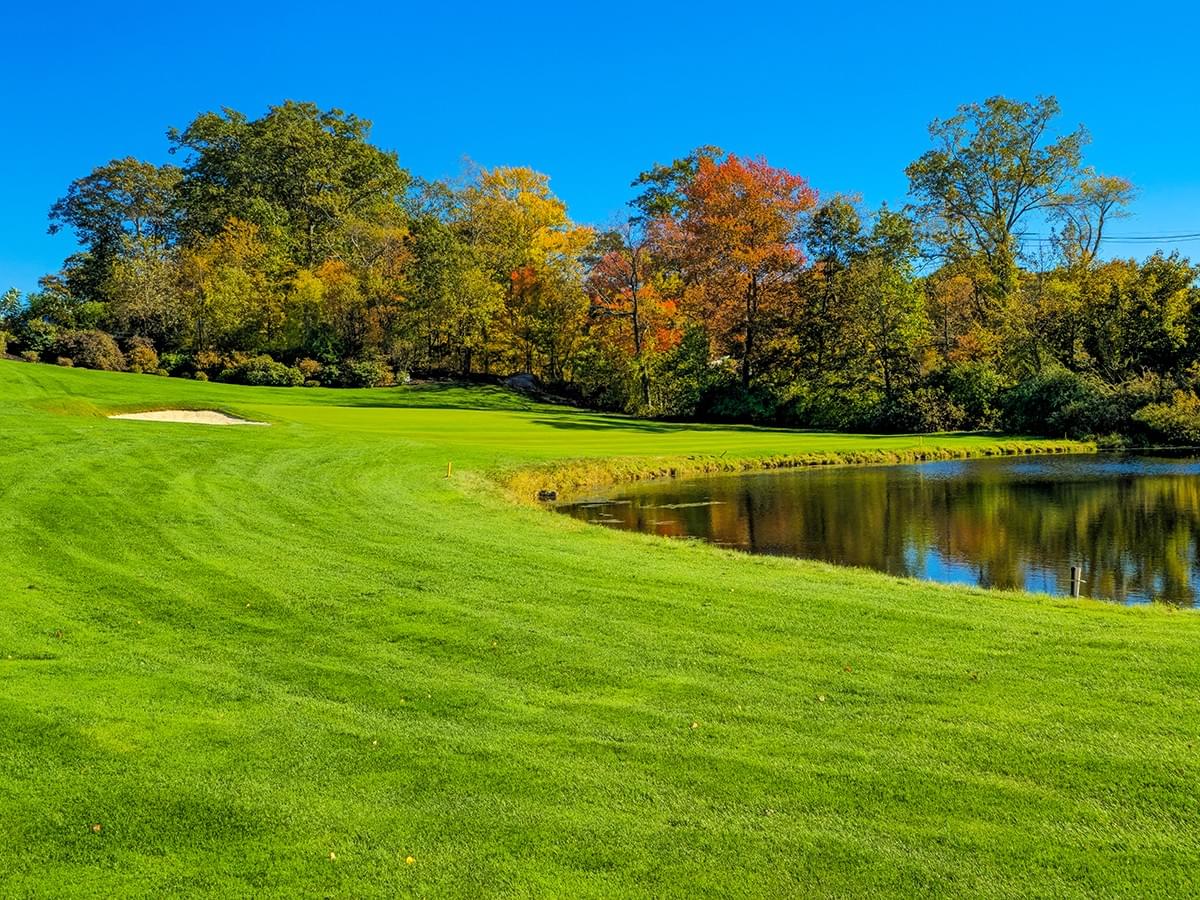
It's not quite evident from this image, but the slope of the green from back to front is incredibly severe. And with the false front very much in play, the risk that a ball could land on the green and roll all the way back down the hill and into the water is very real. As I've mentioned before, best to play the ball to the middle of this green and be very happy if you can escape with a par.
Hole No. 10 - Par 4 - 404 Yards
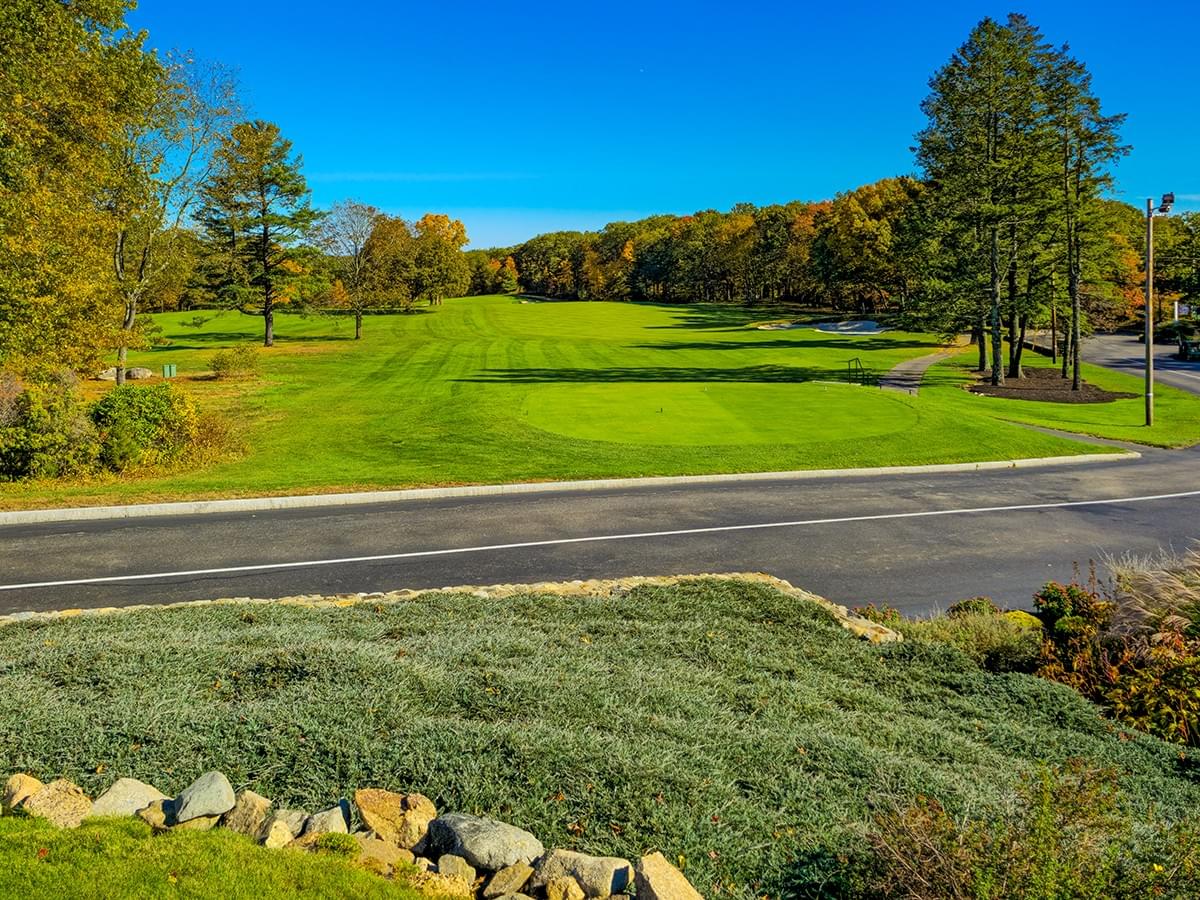
The back nine starts with another par-4 measuring just over 400 yards. The ideal drive is to the right-center of the fairway. But be careful not to lose your tee shot to the right, where trees and thick rough await. Conversely, tee shots played to the left of the fairway may leave players blocked out of a direct shot to the green by the small stand of trees on the left, stretching from 50 to 100 yards back from the green, and by the left greenside bunker.

From the right side of the fairway, the entire green opens up to you, allowing for players to fly a mid-iron to the hole or play a low, running shot up the wide mouth and into the slope of the green. Balls played to either the left or right sides of the putting surface run the real risk of rolling off and finding either rough or one of the two deep greenside bunkers that guard this green, so err on the side of safety and play to the middle of the green (which remains good advice on just about every hole at Salem CC).
Hole No. 11 - Par 5 - 484 Yards
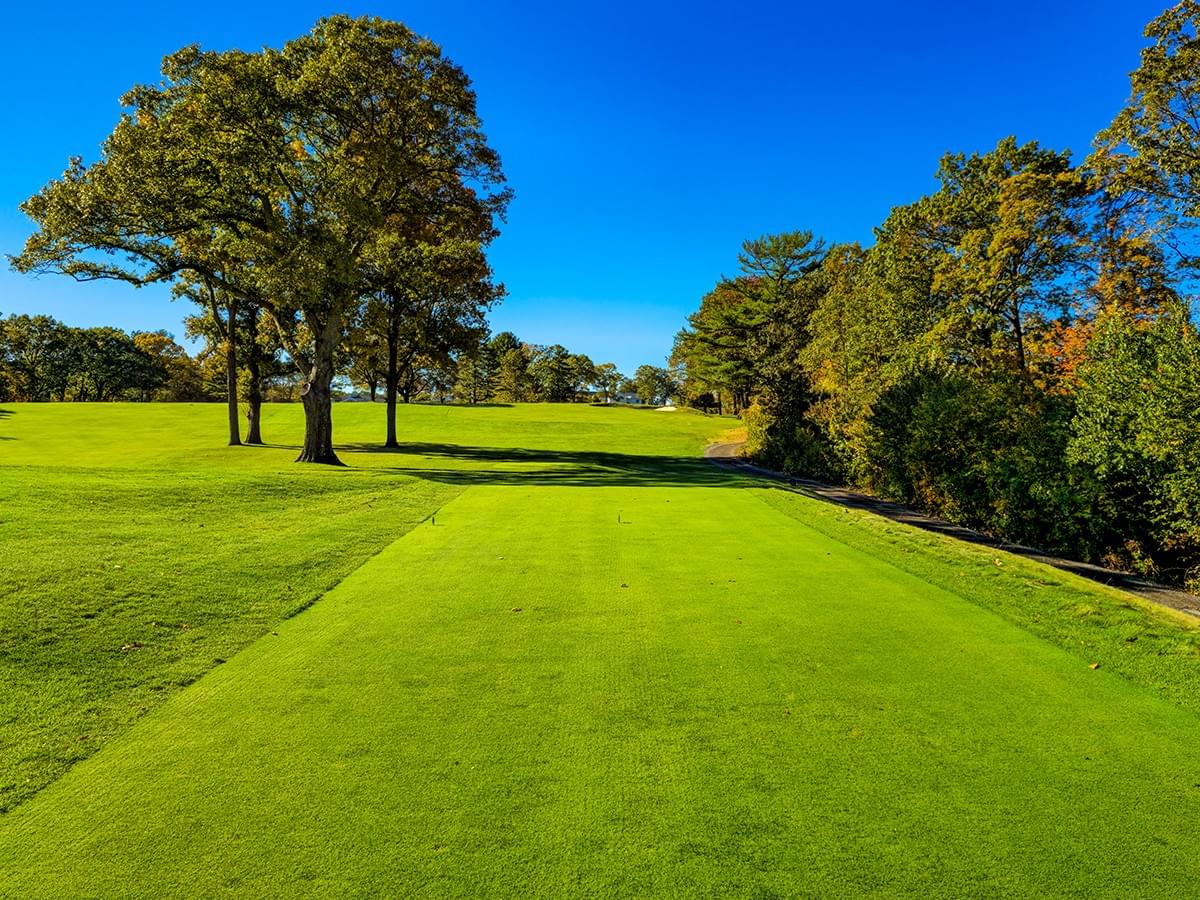
No. 11 is an uphill par-5 that bends right. At just under 485 yards, it is potentially reachable for long hitters, but players must first find the fairway, playing through a narrow chute of trees. A fairway bunker on the right side requires about 200 yards in the air to carry, but the ideal play is really left of the bunker to steer clear of the trees on the right and open up the angle to the green. Balls that miss to the right run may be difficult to find the closer they come to the club's driving range, which sits on the other side of the tree line.
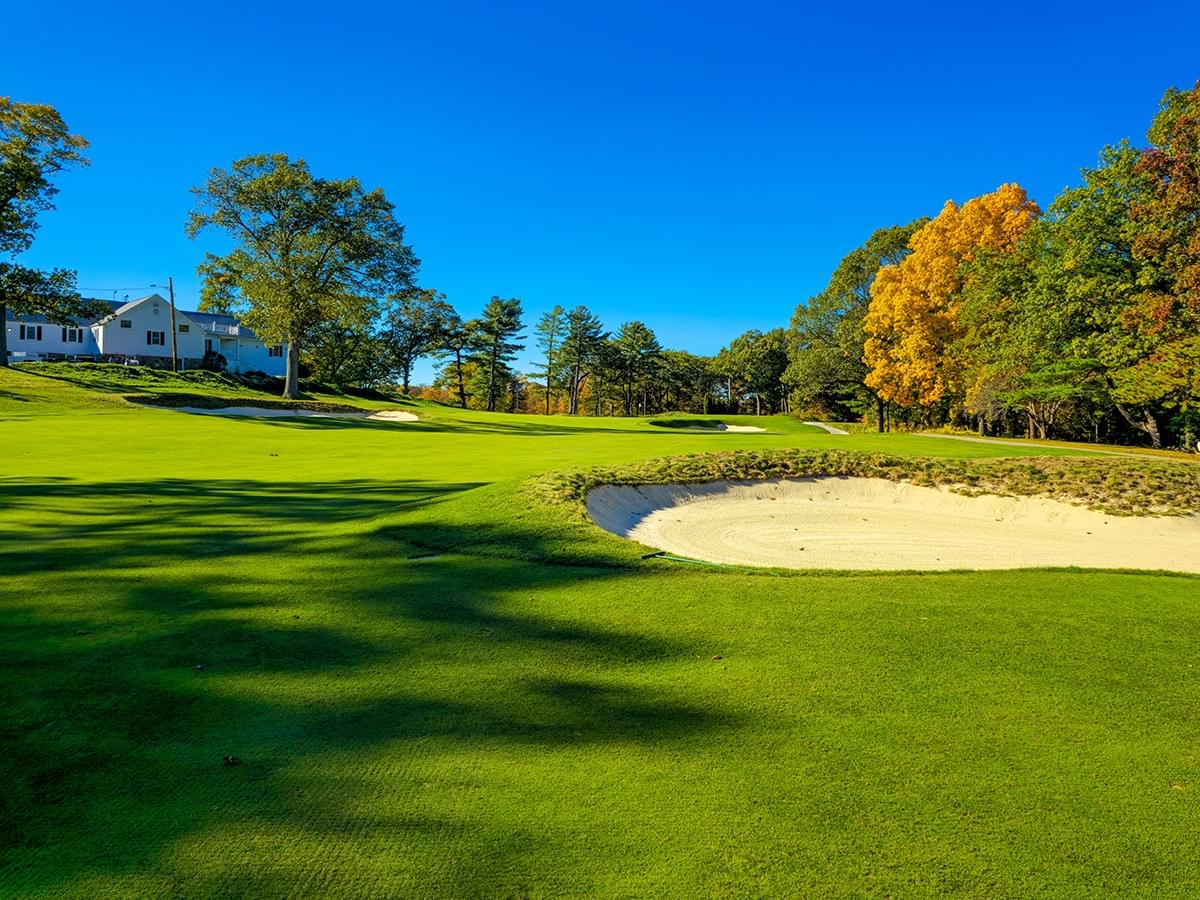
Players who opt not to go for this green in two may want to lay up short of the second fairway bunker on this hole, which sits about 120 yards short of the green, leaving themselves a short iron into the putting surface. Players who choose to challenge the fairway bunker with their second shots will find a smaller landing area but may be rewarded with a shorter wedge shot to the green and a better scoring opportunity.
While there is ample room to play a running shot into this green, the severity of the slope leading into the green will require more roll than may be realized, and balls that don't make the putting surface will roll back and collect in the fairway, leaving a delicate pitch shot that may need to be played up and over the right greenside bunker. This green runs primarily from back to front and left to right, so balls played to the left side of the green should generally funnel back toward the middle and toward right pin positions.
Hole No. 12 - Par 3 - 154 Yards
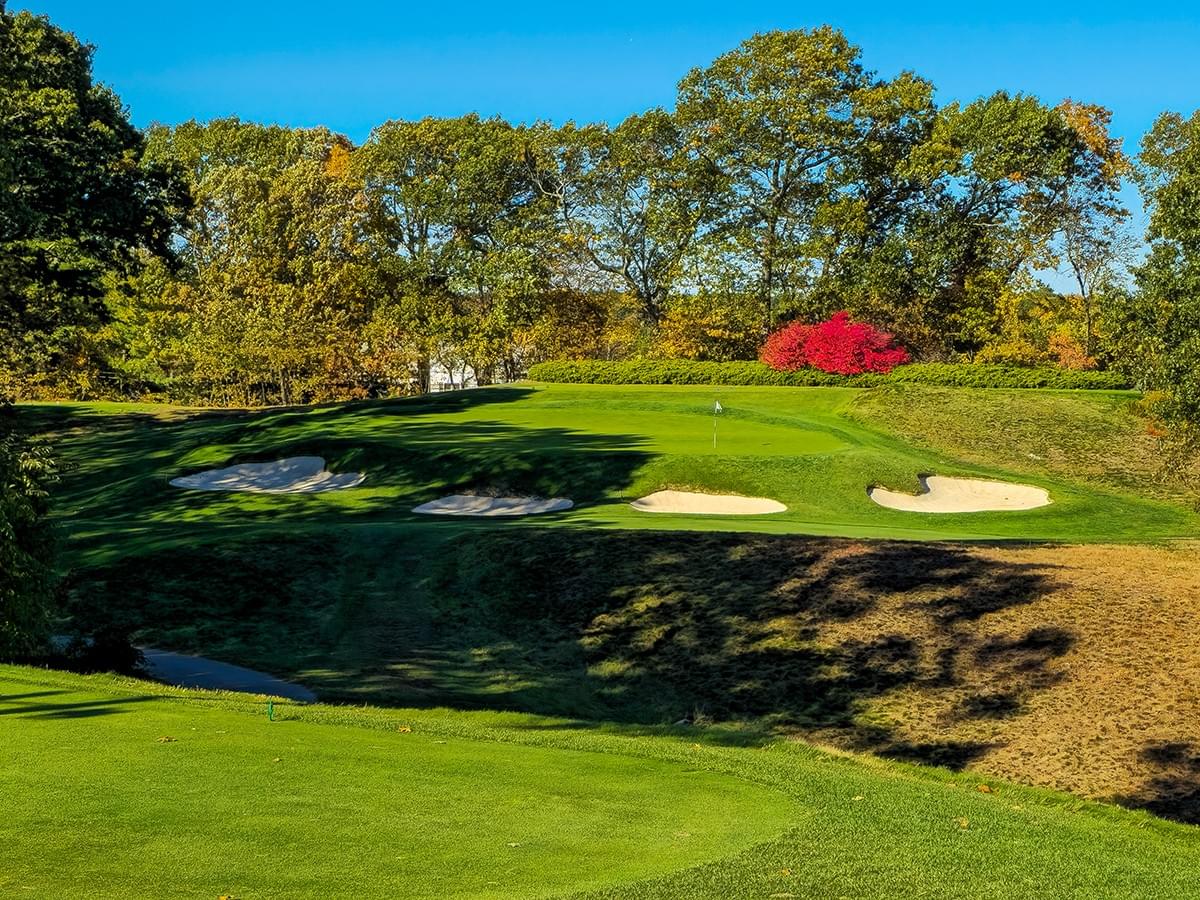
One of my favorite holes on the course, No. 12 is a mid-length par-3 featuring a two-tiered green that plays severely from back to front. When the pin is on the lower tier, as it was this day, a shot played to the upper tier has almost no chance of stopping anywhere near the hole. Unless your name is Phil and you're a member. For the Phil who joined our group this day, No. 12 was his sixth -- yes, SIXTH -- birdie of the round, and it was a bomb from about 40 feet away on that top tier. For the rest of us, the keys to this hole are taking enough club to carry the four deep bunkers short of the green and finding the right tier to set up a possible birdie putt or being really on point with our lag putting to save par. Really just a wonderful hole set beautifully into this small corner of the course.
Hole No. 13 - Par 4 - 342 Yards

If I start writing about how cool each hole is on the back nine at Salem CC, this blog is going to get redundant fast. Suffice to say, I am a big fan. And the 13th is no exception, a hole that some have argued is among the top 5 holes Donald Ross ever designed.
The shortest par-4 on the back nine at less than 350 yards, this hole doesn't require driver off the tee. In fact, driver may be more trouble than its worth as a long tee shot not only risks finding the middle fairway bunker in the distance but also positions the player nearer to the bottom of the steep climb to the green, resulting in limited visibility for the approach shot. A solid 220-yard or so tee shot up the left side into this bowl-shaped fairway sets up a wedge or short-iron approach and keeps the player far enough back in the fairway to see the flag and avoid the sand.
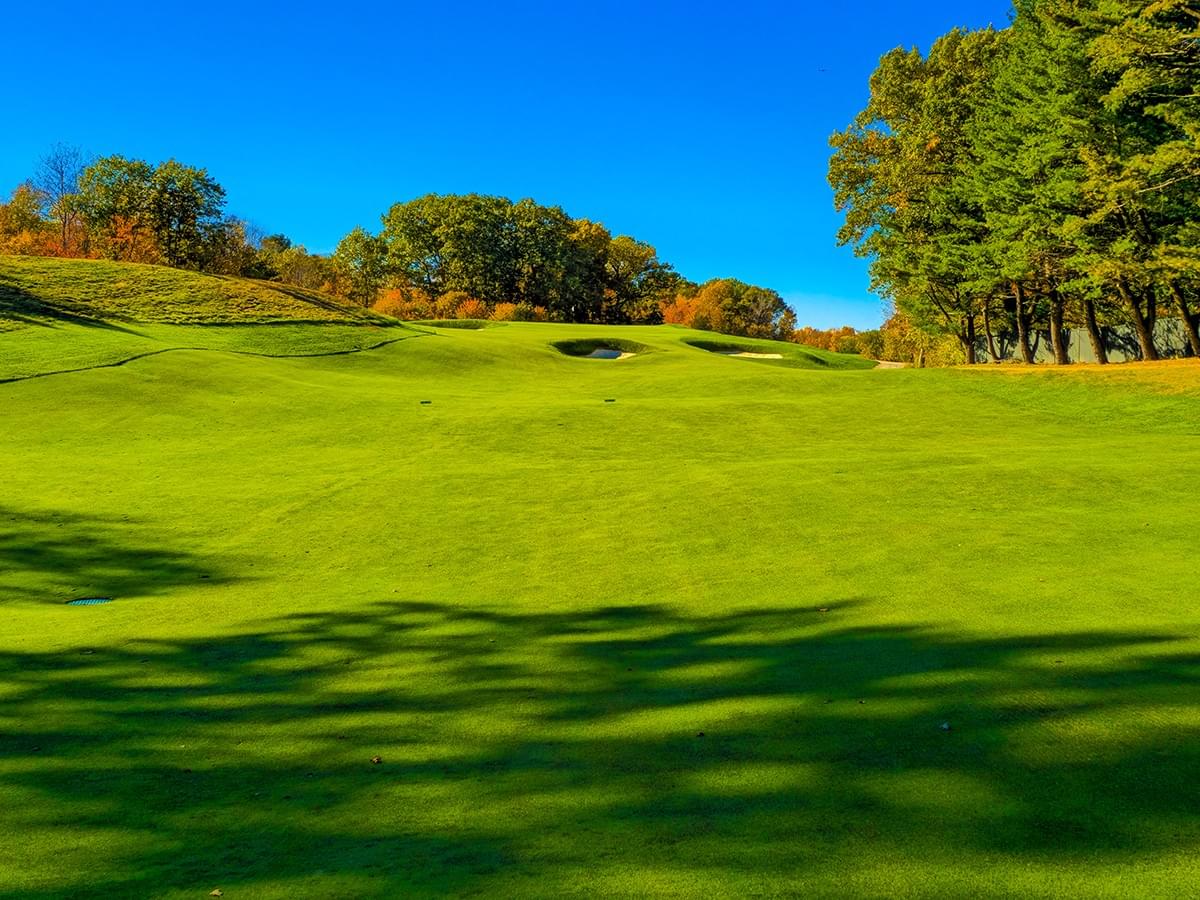
The approach to this three-tiered green must be played to the right level and kept below the hole. For a short hole, the putting surface is maybe the most challenging on the course. Masters champion, winning Ryder Cup captain, and acclaimed golf course architect in his own right Ben Crenshaw has called the green at 13 one of his favorites in the world. Don't be fooled by the length of this hole; par is a very good score on No. 13.
Hole No. 14 - Par 3 - 187 Yards
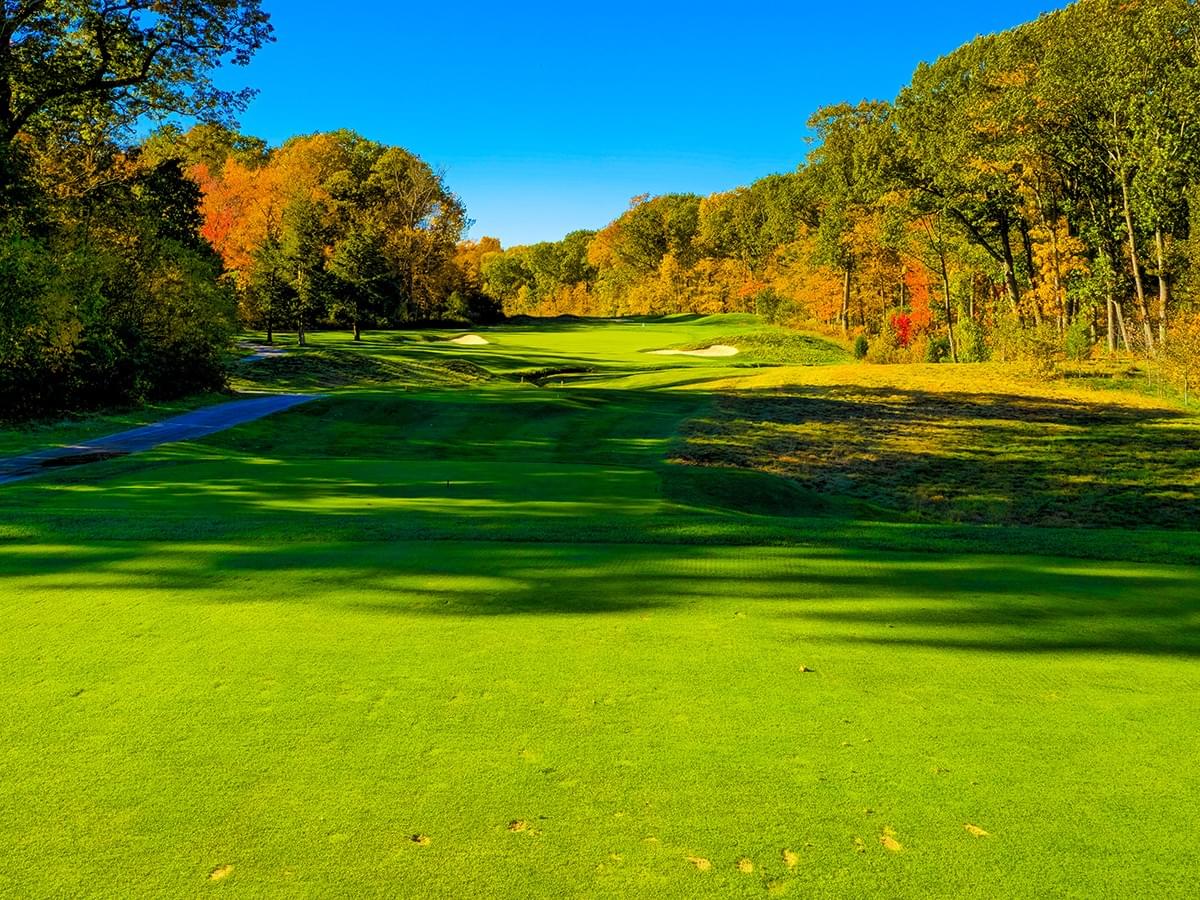
Featuring one of Salem CC's largest greens, No. 14 is a long par-3 that doesn't give up birdies or even pars without a fight! Visually intimidating and at the same time deceptive, the two bunkers that front the green are actually some 10-15 yards short of the putting surface. But they look to be greenside from the tee and can lead players to play more tentatively than they otherwise might. As a result, players may make hesitant swings that leave their balls well short of the green or make loose swings that send their tee shots offline. For players who do miss the putting surface, there is much more room left than right on this hole. I can attest to that from experience.
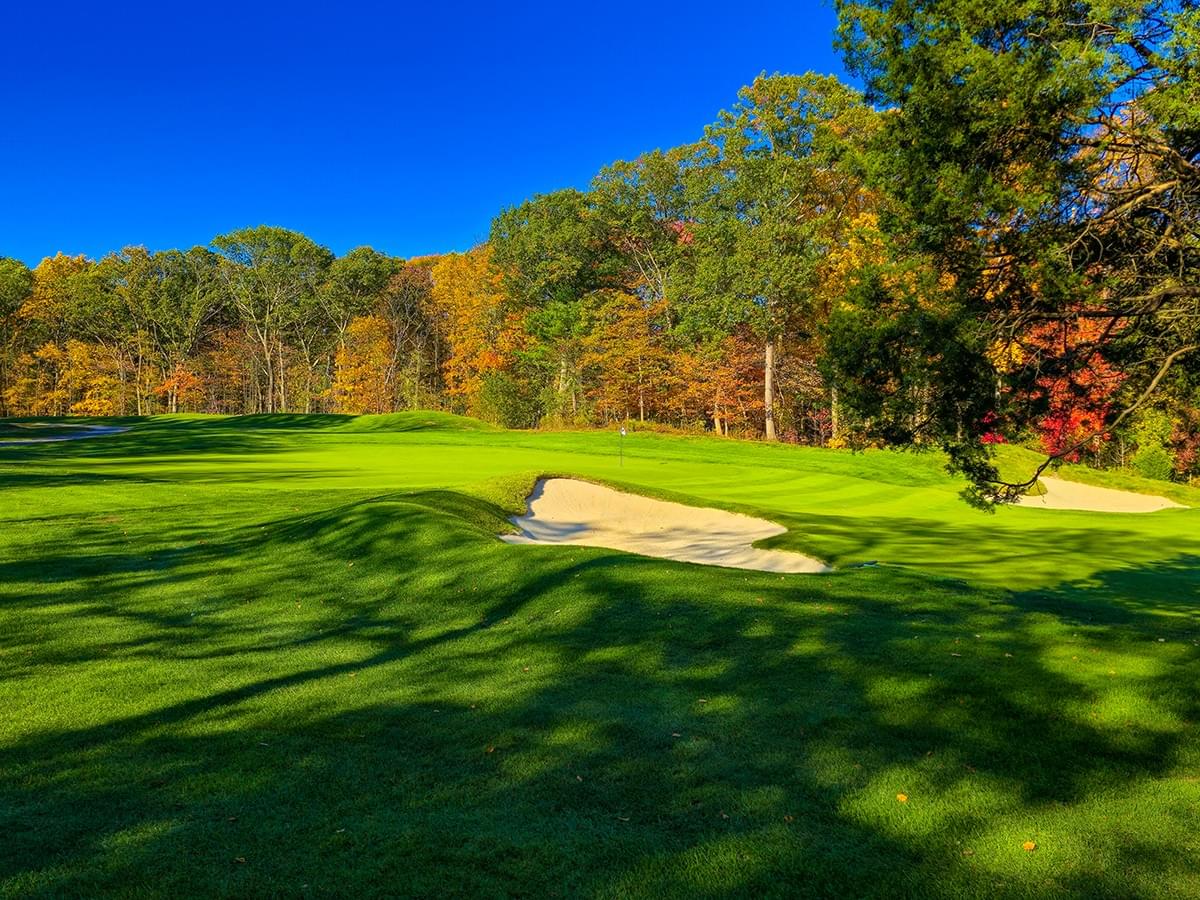
The green at 14 once again slopes from back to front. And from the left side of the hole, a relatively easy pitch in the direction of the center of the green led to a short uphill bid to save par. And it's fair to say I likely benefitted from the recent seasonal aeration, which had the greens playing somewhat slower than their usual glassy speeds. Throughout most of the playing season, it's easy to imagine any shot from the rough failing to hold the green. And even putts from the back of the green to a front pin could easily send a ball off the front edge, leaving a difficult chip back up the hill as a player tries to scramble for bogey.
Hole No. 15 - Par 5 - 525 Yards
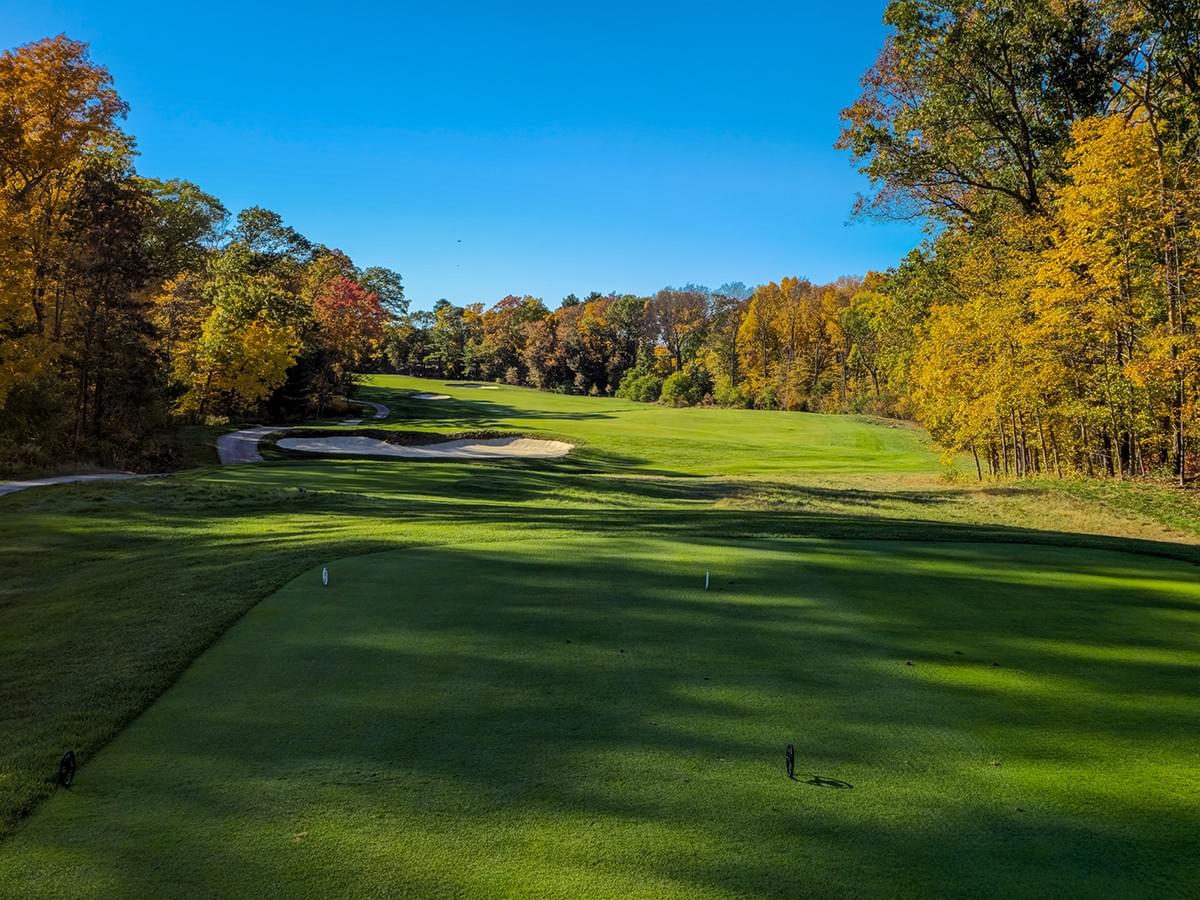
No. 15 is the longest par-5 on the course. It is reachable by the longest hitters, but getting home in two demands tremendous ball striking and nerves of steel. The tee shot plays downhill, and longball hitters can find the fairway's only level land between about 270 - and 310 yards off the tee. The fairway pinches tight on the left side at about this distance, however, as a small brook crosses the hole.
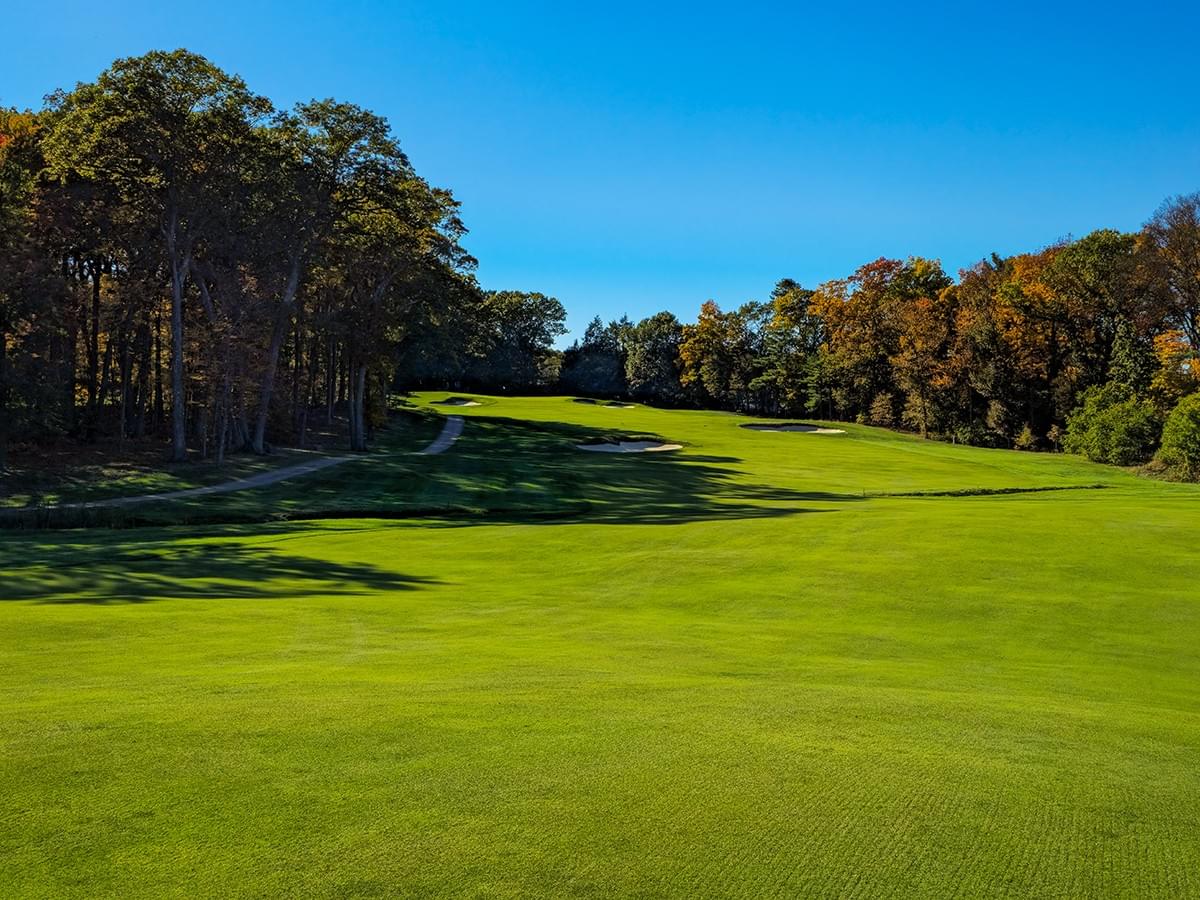
While the ideal tee shot is a draw that feeds down to the flat spot in the fairway, players whose drives go too far left will find themselves blocked from the green by trees. For those players and those of us who don't have the distance to reach this green in two, the ideal layup is right of the left fairway bunker and short of the fairway bunker on the right, setting up an uphill short-iron shot to this elevated green.
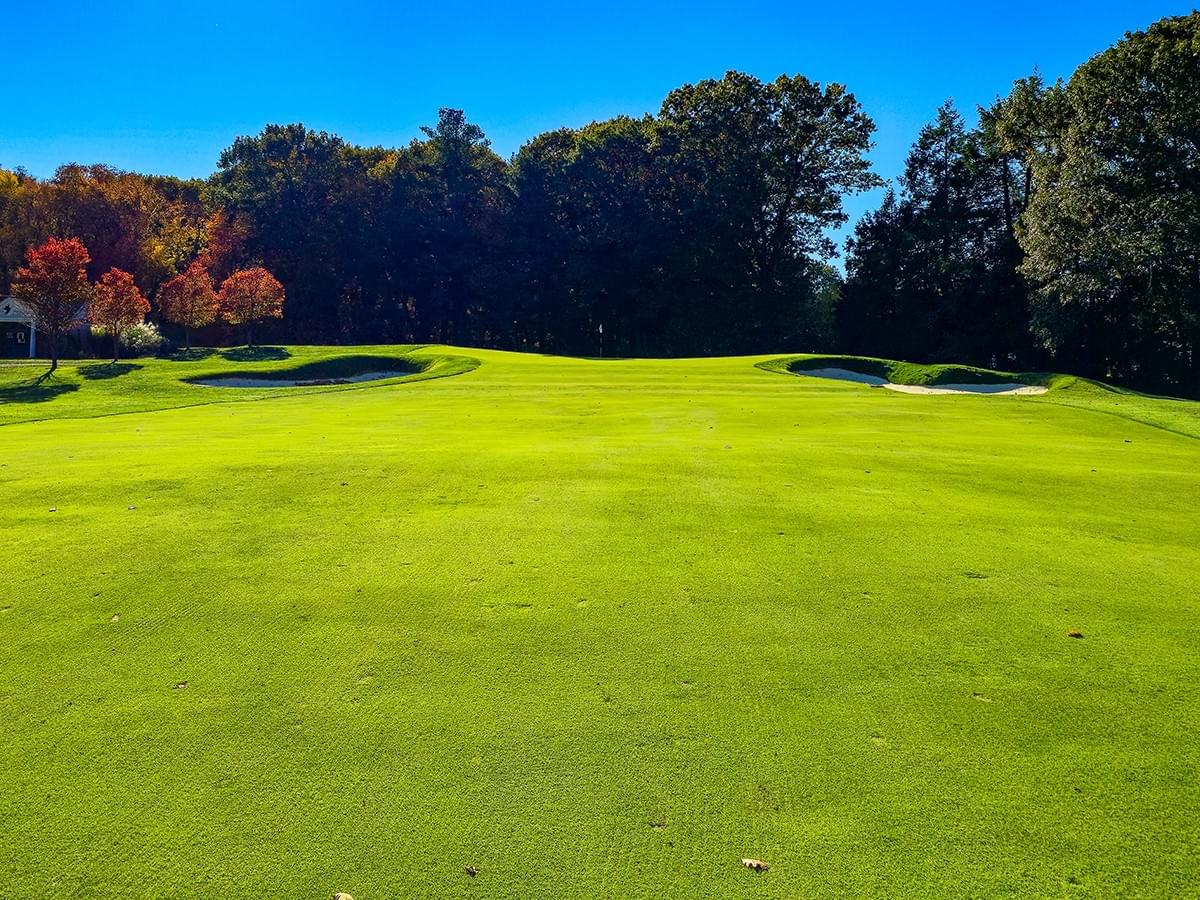
The green on No. 15 is protected by two deep bunkers that pinch tight the front of the putting surface and frame the green's false front. Players will want to play their approach shots deeper into this green that features squared off back left and right corners, ideally using the back-to-front slope of to bring the ball back below the hole for their first putt.
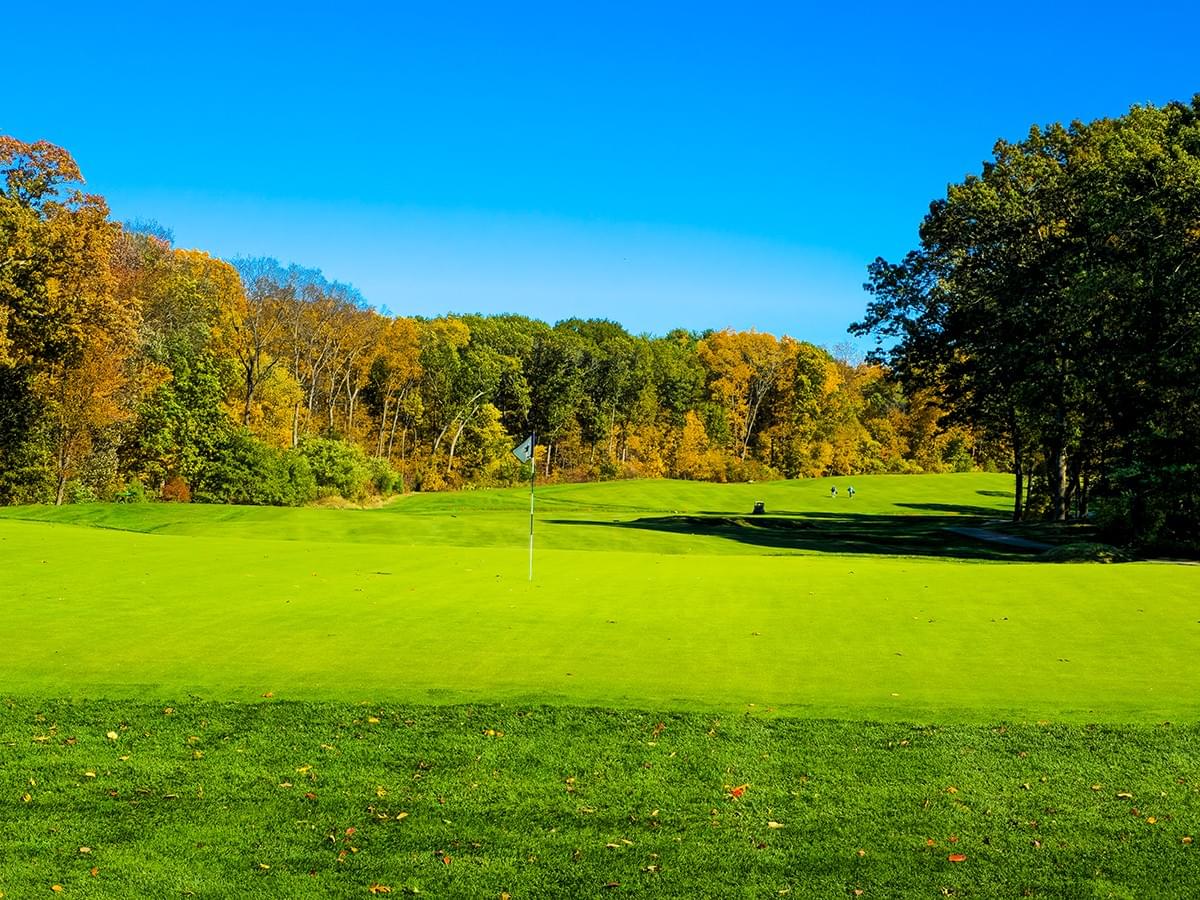
On this particular day the pin was located in almost the exact center of this large green, and from this vantage, it's a bit easier to see just how far downhill it is from the green back to the landing spot in the fairway.
Hole No. 16 - Par 4 - 405 Yards
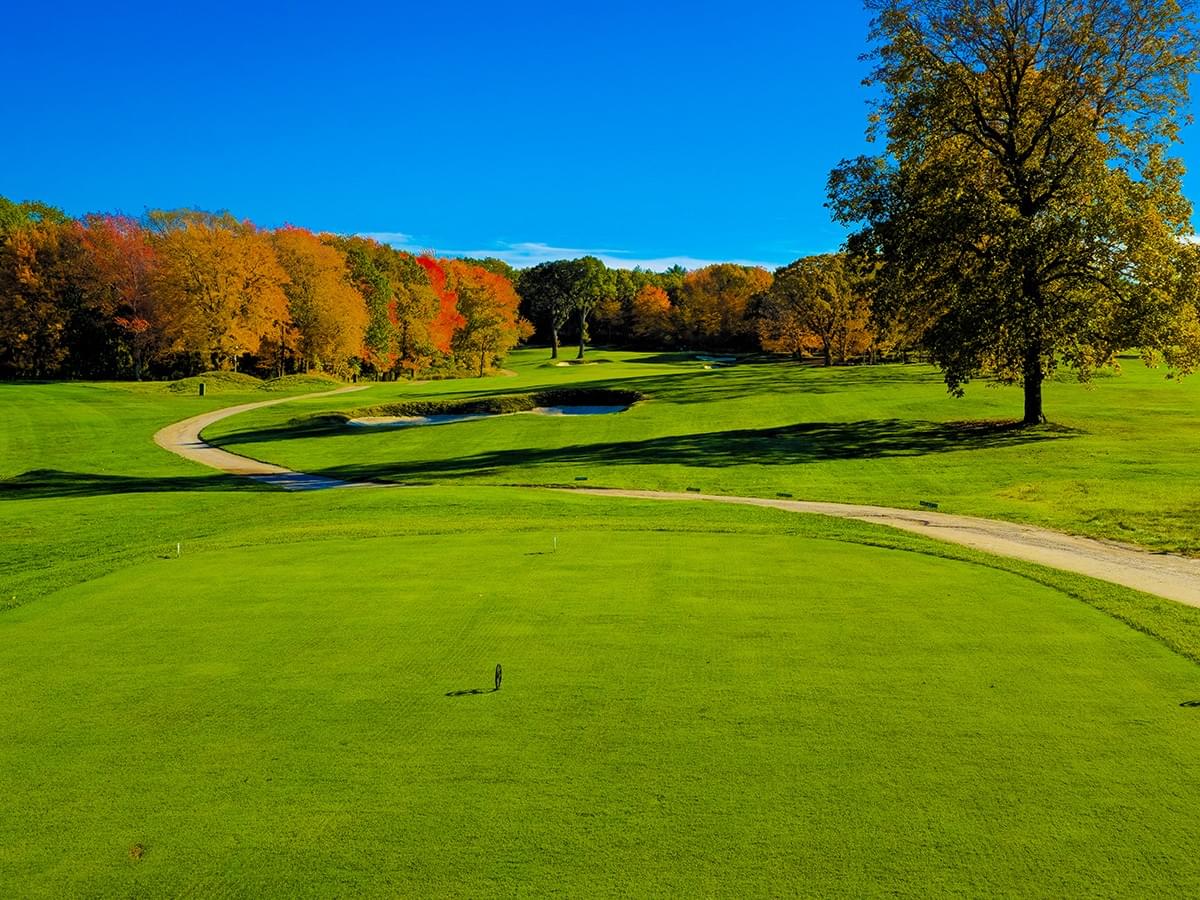
The 16th hole kicks off what Salem CC members will argue is perhaps the finest three-hole finish in Massachusetts. And it's hard to argue with them. This long, straight par-4 plays to over 400 yards. From this tee until the final putt on 18, the course does not abide anything less than precision ball striking. The bunker that sits roughly 100 yards in front of the tee offers the confident player a target line for his drive but also serves to hide much of the fairway from sight. The player is almost asked to take it on faith that a well-struck tee shot will find safe purchase in the short grass beyond.
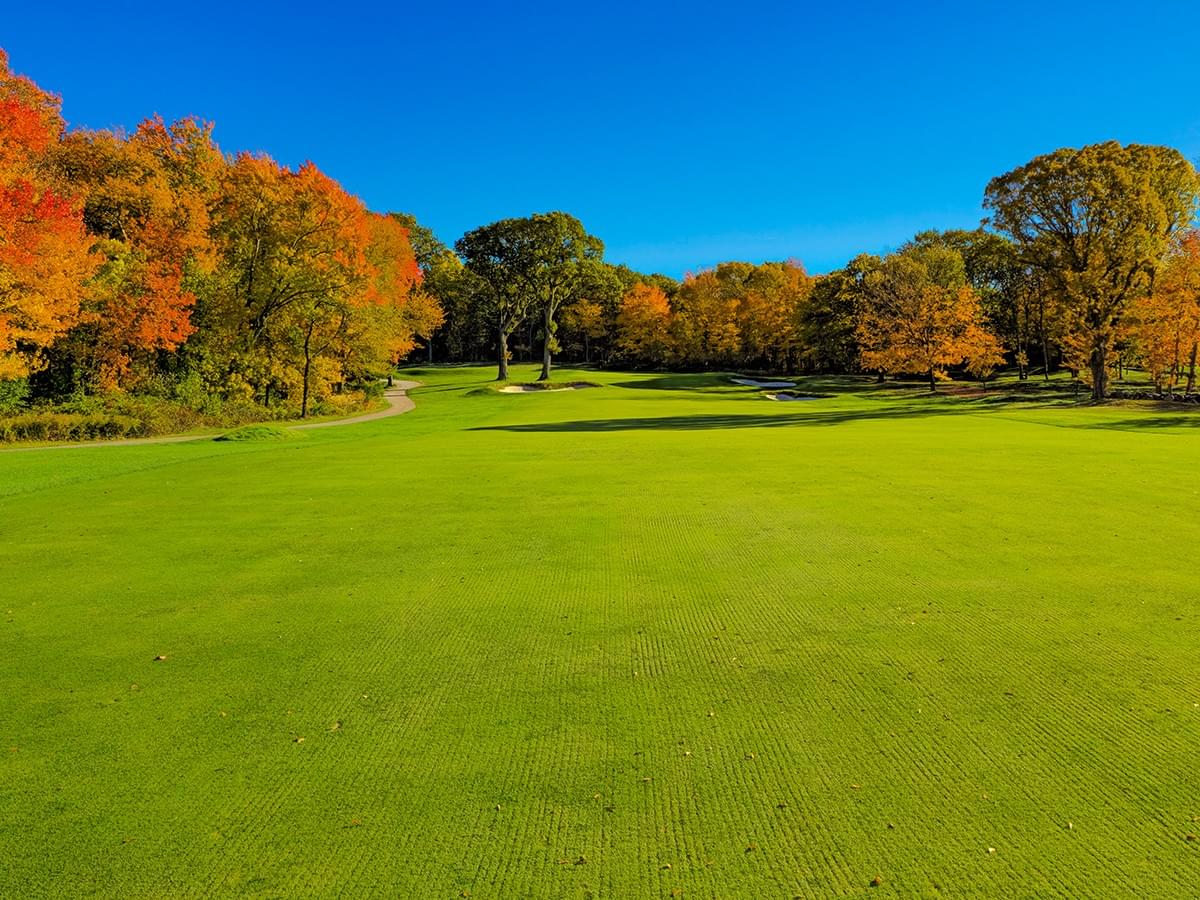
A well-struck drive should leave the player with a mid-iron into this green that is protected by sand short left and right, as well as by two large trees on the left side. A mid-iron to the middle of this green sets up a reasonable birdie opportunity, but players must be mindful of the subtlety of this green, which isn't as severely sloped but may be require that players factor in more break on their putts than many of the other greens on the course.
Hole No. 17 - Par 4 - 410 Yards
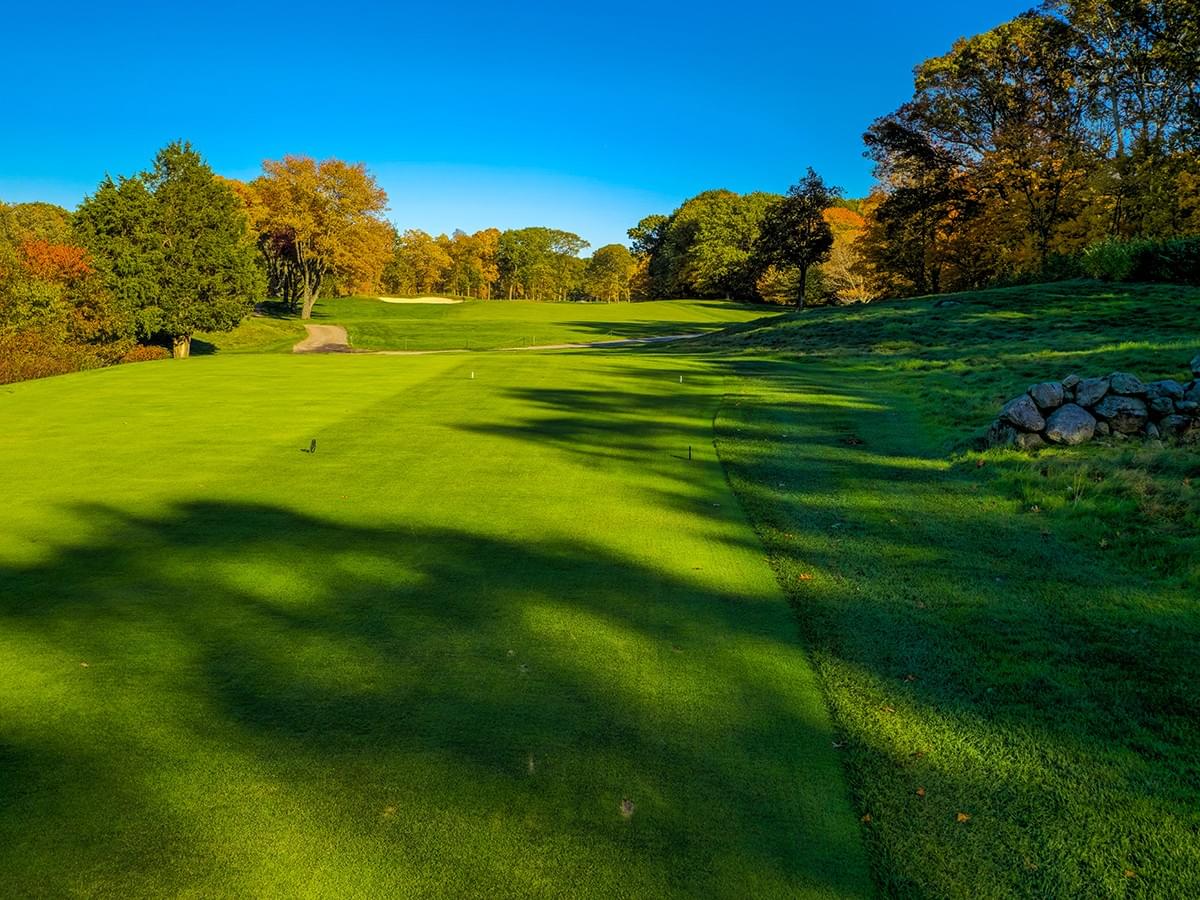
The longest par-4 on the course, No. 17 requires both ball striking and creativity for any chance at a birdie. A drive down the right-center of the fairway sets up the best angle to the green. A tee shot to the left risks finding the fairway bunker, which is virtually a one-shot penalty (as I discovered), and any ball in the rough will have an almost impossible time holding this shallow green.

From the right center of the fairway, the ideal play is a low, running shot that slows as it climbs the bank into the green, rises over the false front, and comes to rest somewhere near the flag. Anything played to the left side of this green will fall off to the rough, making recovery for par a longshot at best. It was here, after playing two balls left of the pin and watching both fall off the green, that I finally learned my lesson about simply playing my approach shots to the middle of the green -- 17 holes later than I wish I'd figured that out!

From this angle, you can see the dramatic fall-off to the left, as well as just how steep that bank and false front are. A ball played from the rough anywhere around this green will have a hard time holding the putting surface. Big numbers can easily add up on the scorecard at this penultimate hole.
Hole No. 18 - Par 4 - 385 Yards
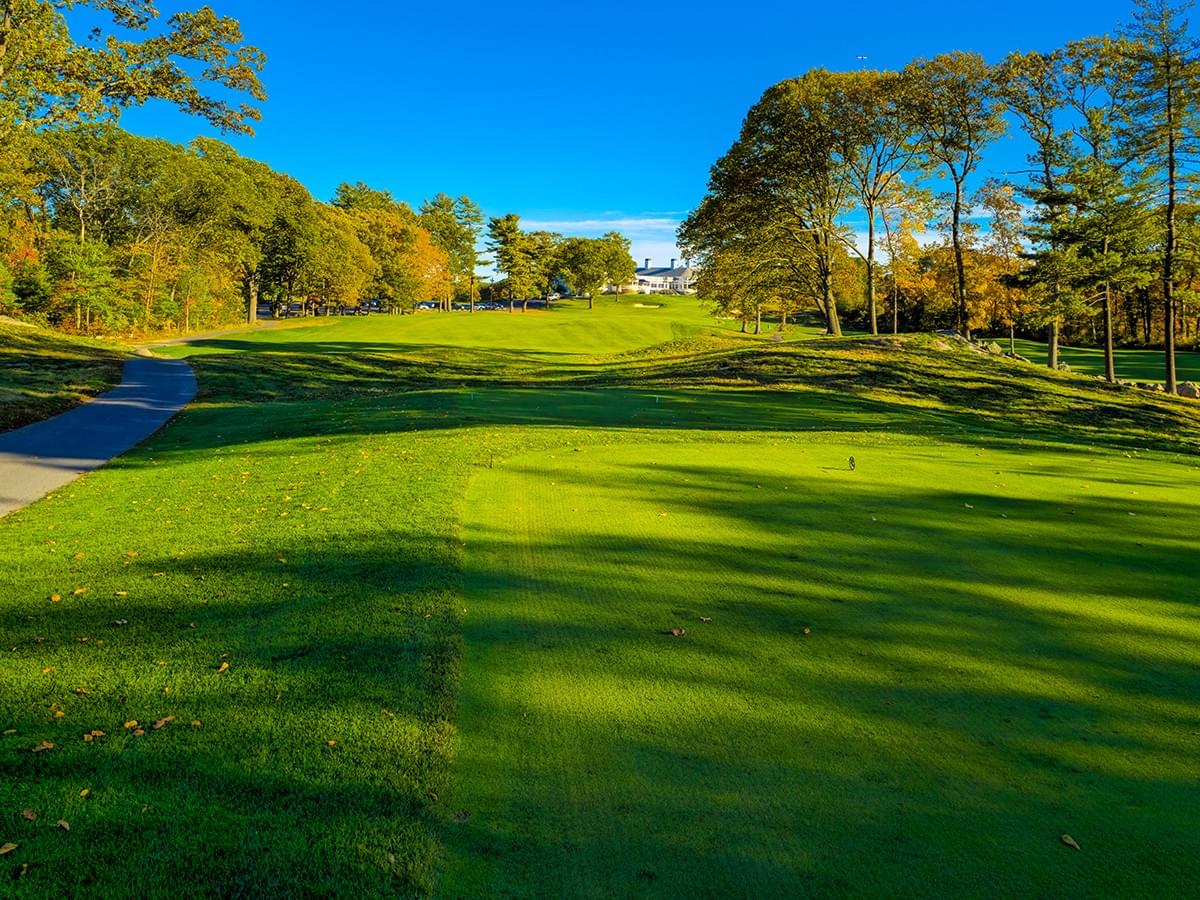
No. 18 is an absolutely fantastic finishing hole. Bending gently from left-to right, the tee shot plays over the crest of a hill and down to the fairway below. The ideal tee shot is to the left side of the fairway, catching the slope for some additional roll, and setting up a clear shot uphill into this green. There are no fairway bunkers, and there is no water on this hole, so tee it high, and let it fly ... just keep it in the short grass!
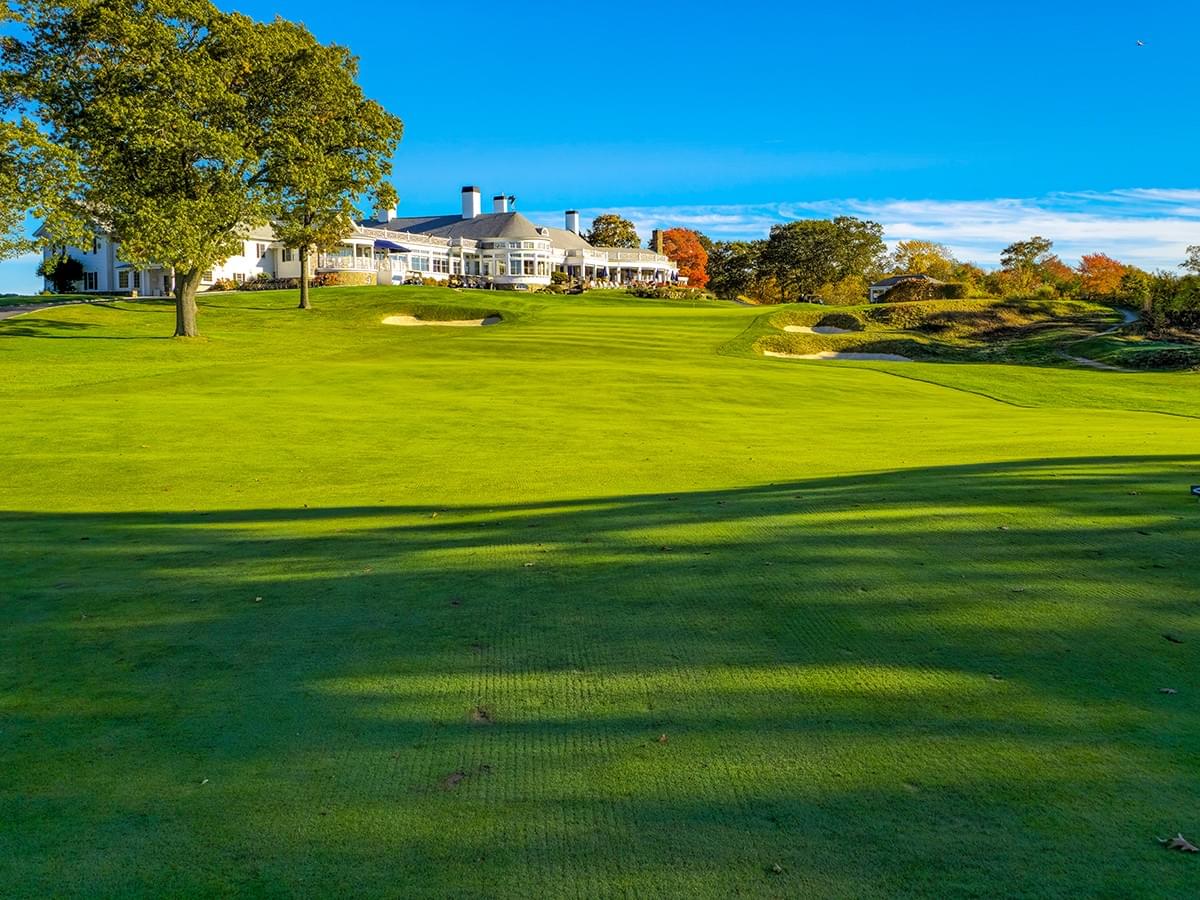
I absolutely love the look from the 18th fairway at the green and the clubhouse beyond here at Salem CC. A single bunker short-left of the green, and two bunkers short-right demand that the player finds the putting surface with his approach. Take at least one extra club to account for the uphill elevation of the green and avoid the false front that makes up the first 10 yards or so of the green. Balls that are short of the putting surface or find the false front will collect some 40 yards below the hole, near the lower-right bunker, leaving a very delicate pitch back up the hill to try to save par. Players whose approach shots do find the putting surface would do well to leave the ball below the hole. Escaping the 18th with a par might be almost as good as being acquitted in one of those witch trials all those years ago!
Conclusion
Salem Country Club is a wonderful Donald Ross original and a fantastic complement to all of the other great golf Massachusetts has to offer. I'm blessed to play a lot of great golf courses. There are many I play that are on the various top-100 rankings, and I understand why they're ranked as they are, but I walk away without a real itch to play them again any time soon. Salem Country Club is one of those courses that is just so much fun that I could have immediately headed out for another round and can't wait to get back.
Have you played Salem Country Club? Been hexed by a witch or tried for witchcraft? Drop a comment below or send me an email at shawn@iputtaround.com to let me know what you think of the course or to share any thoughts you might have about the blog.
